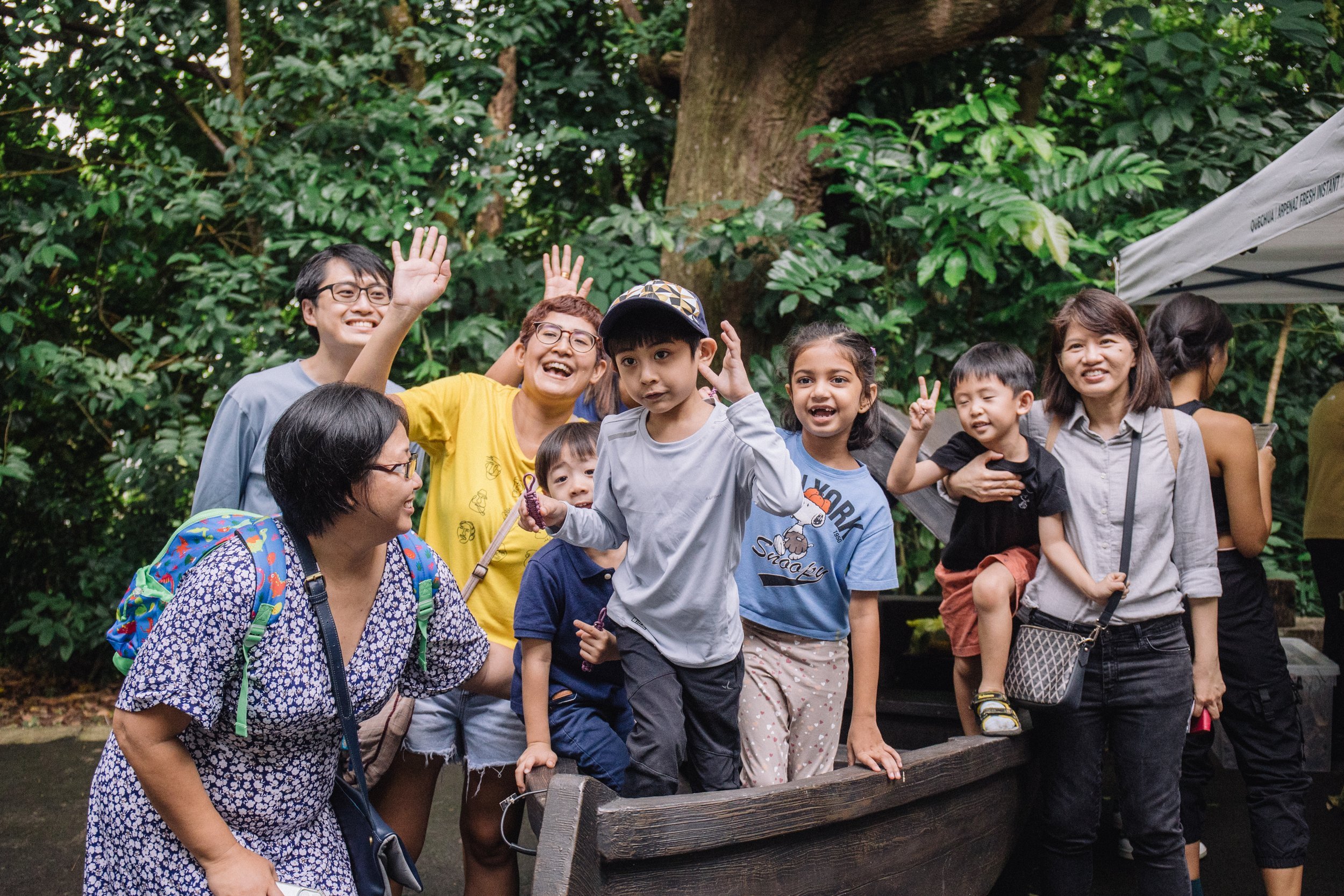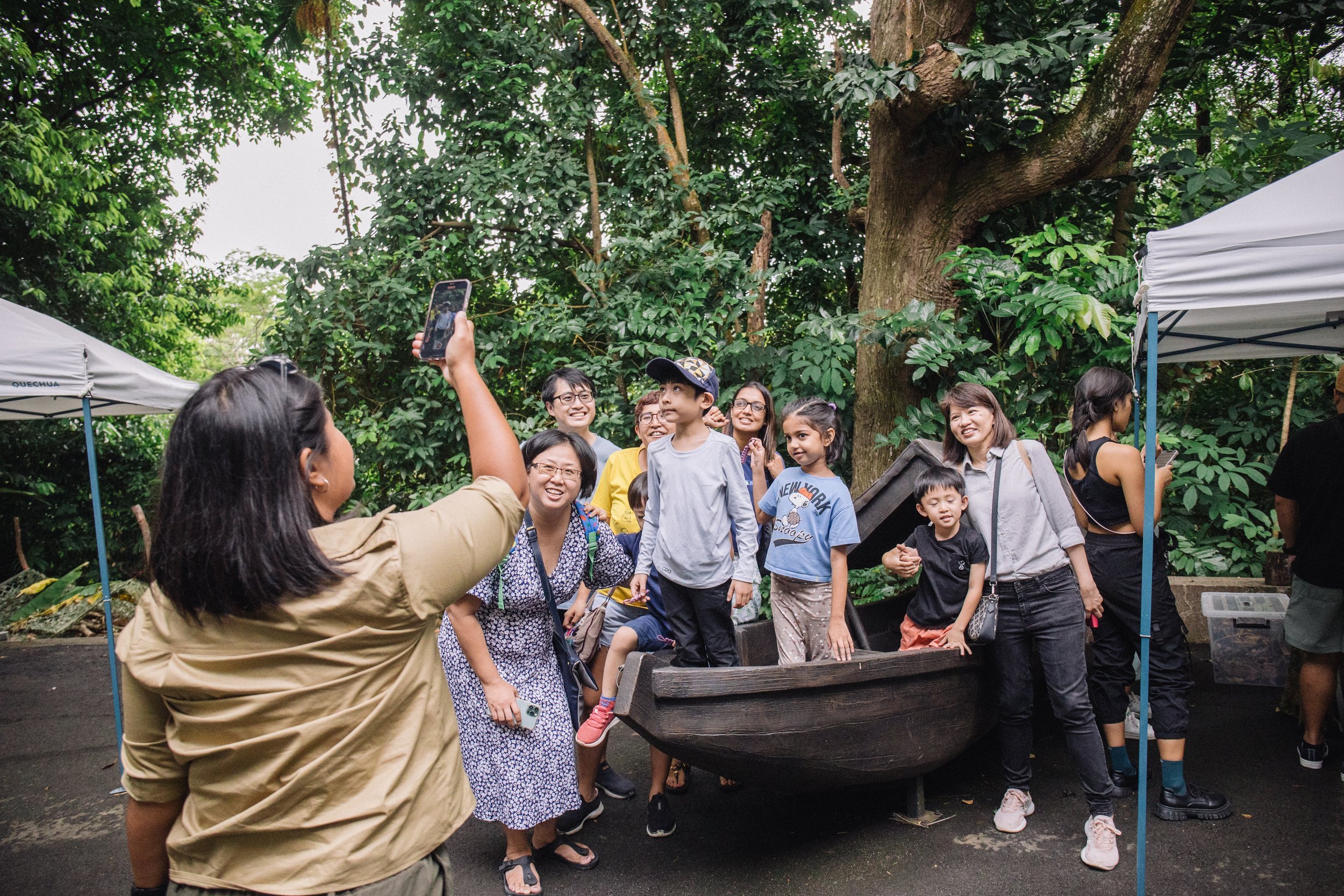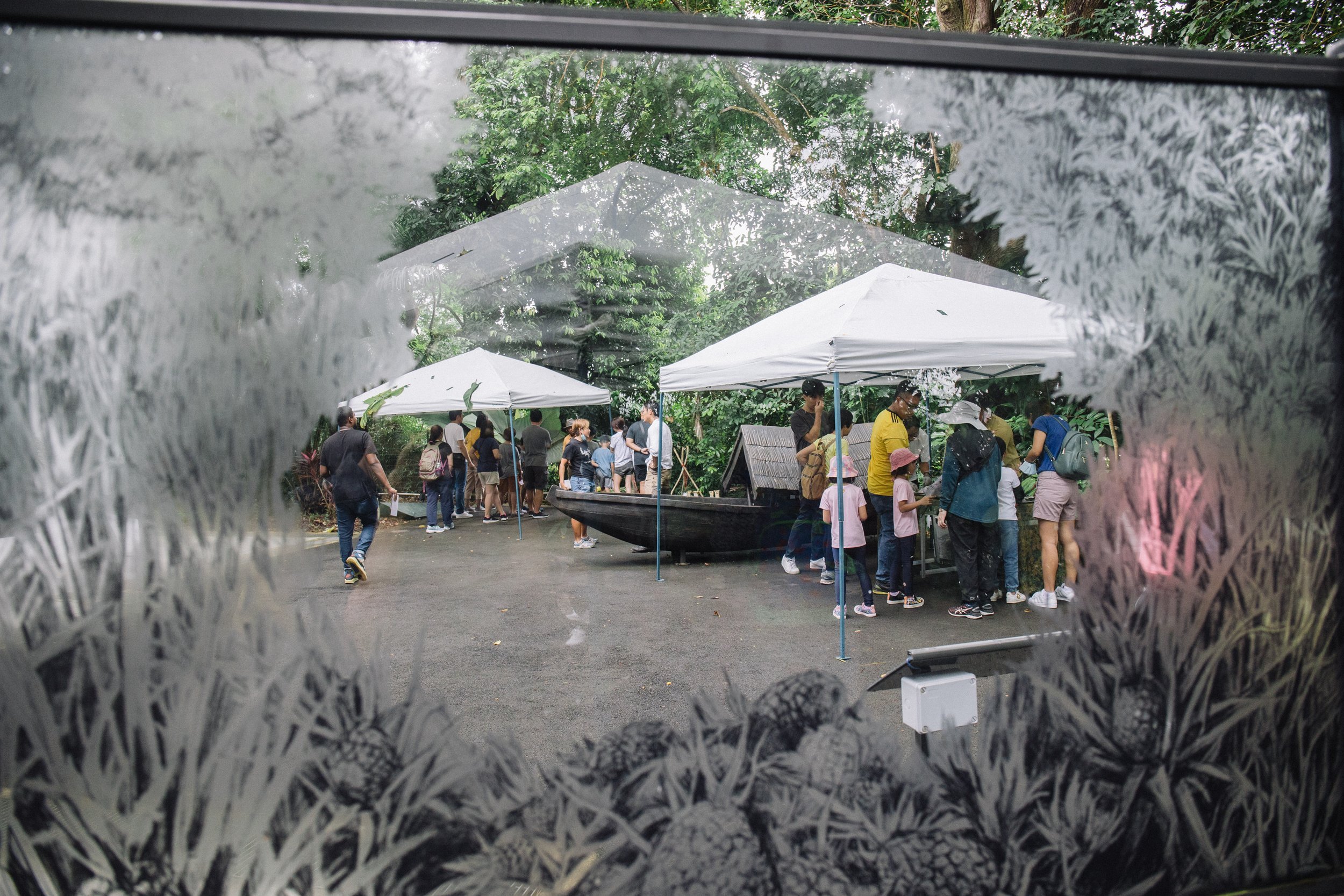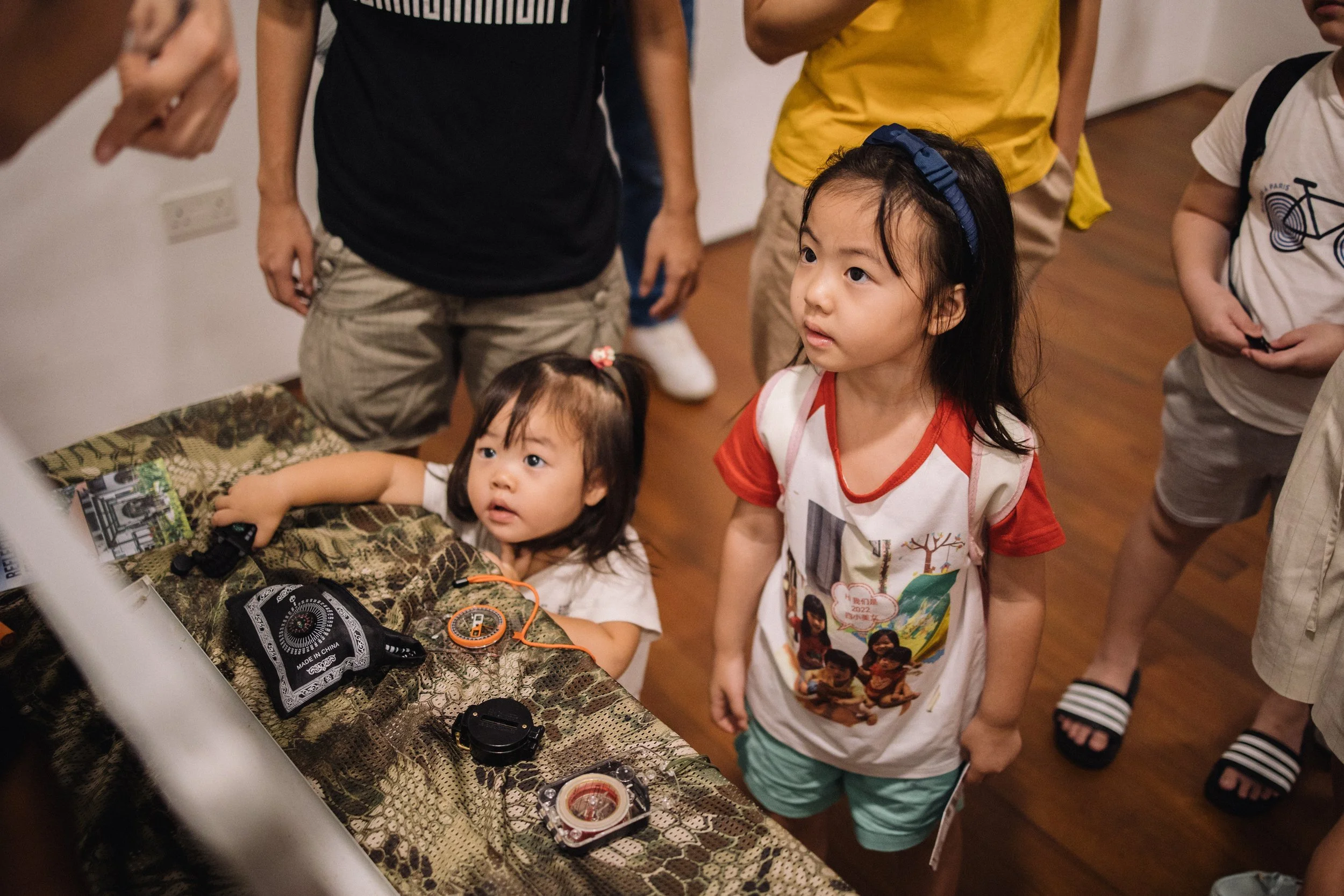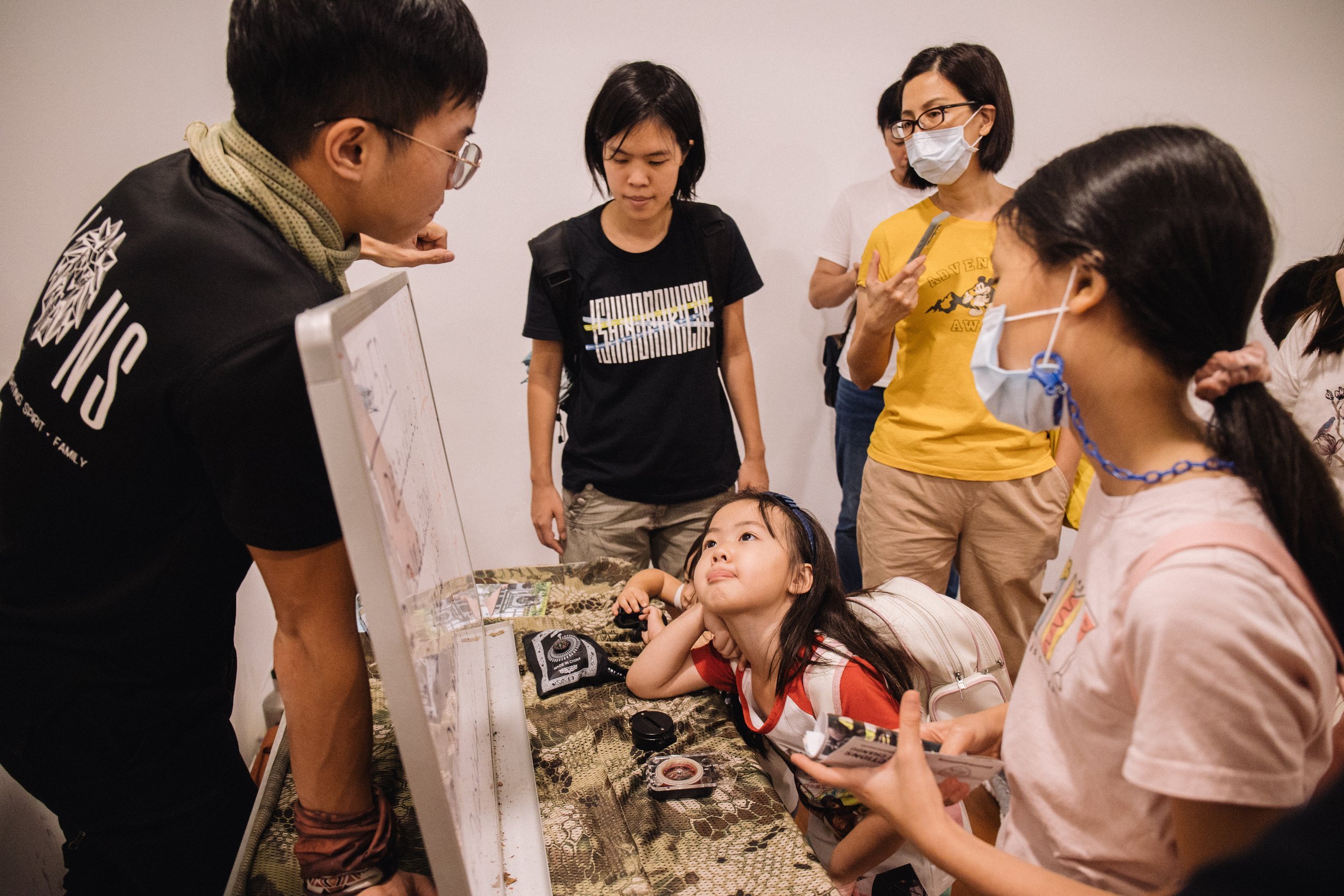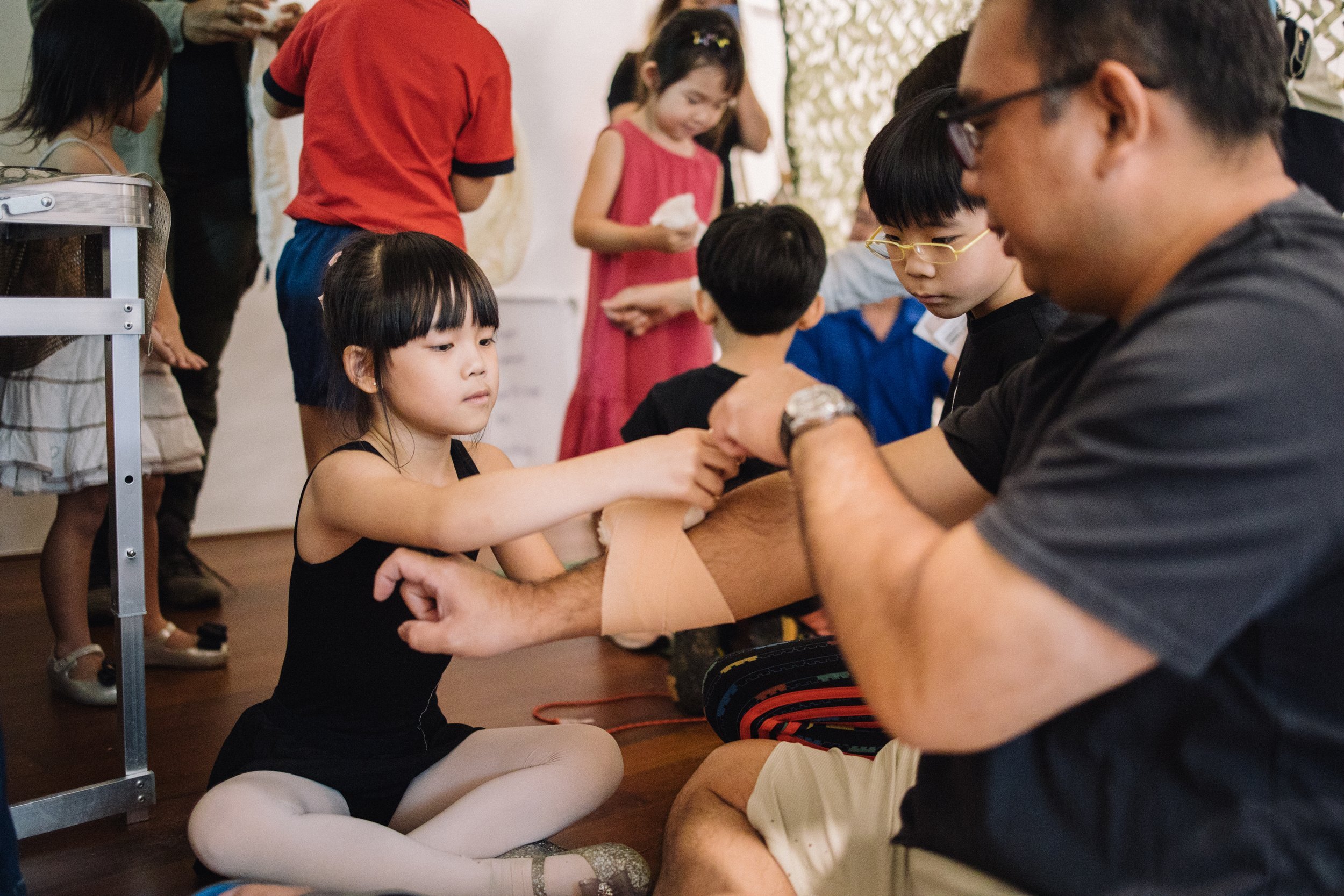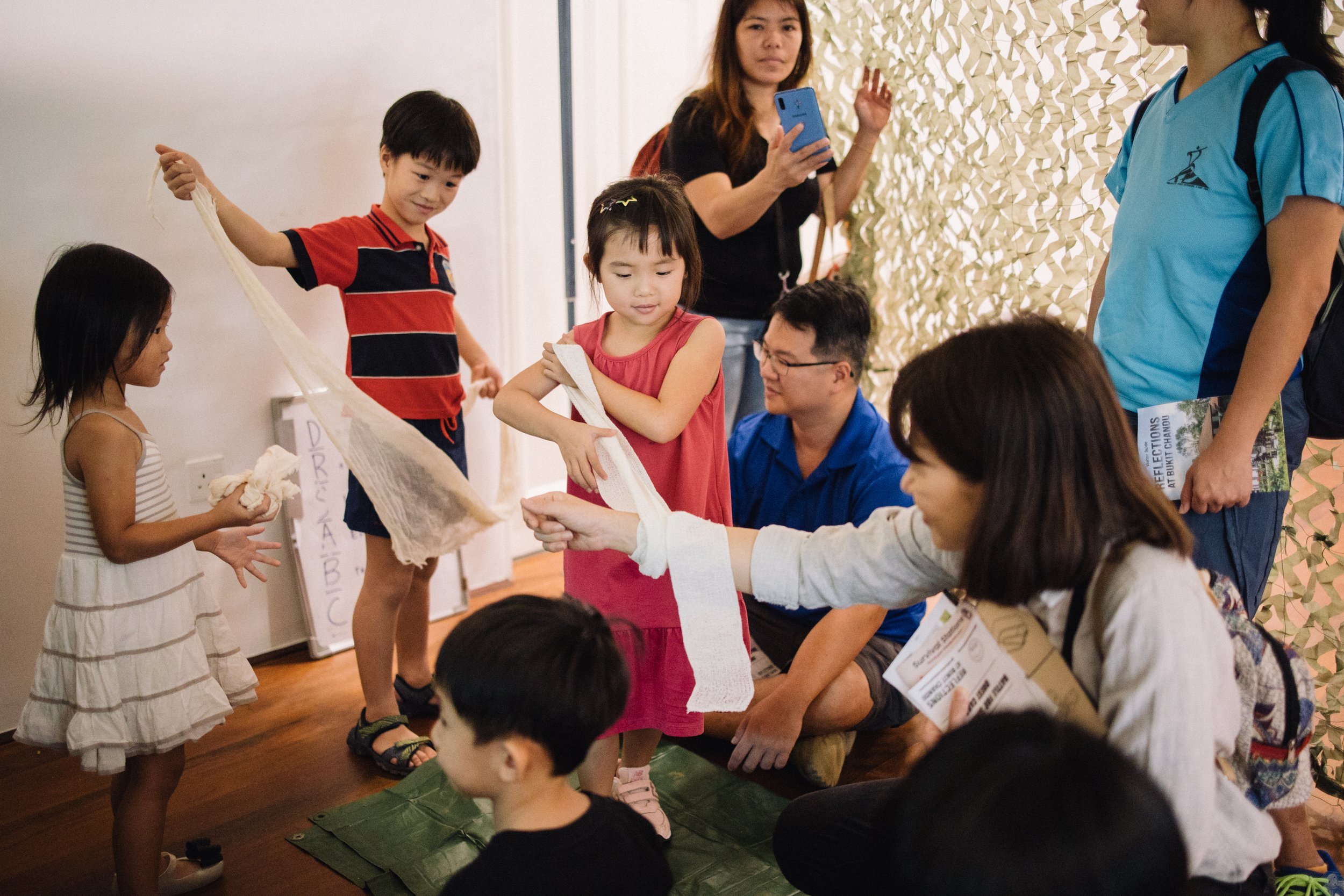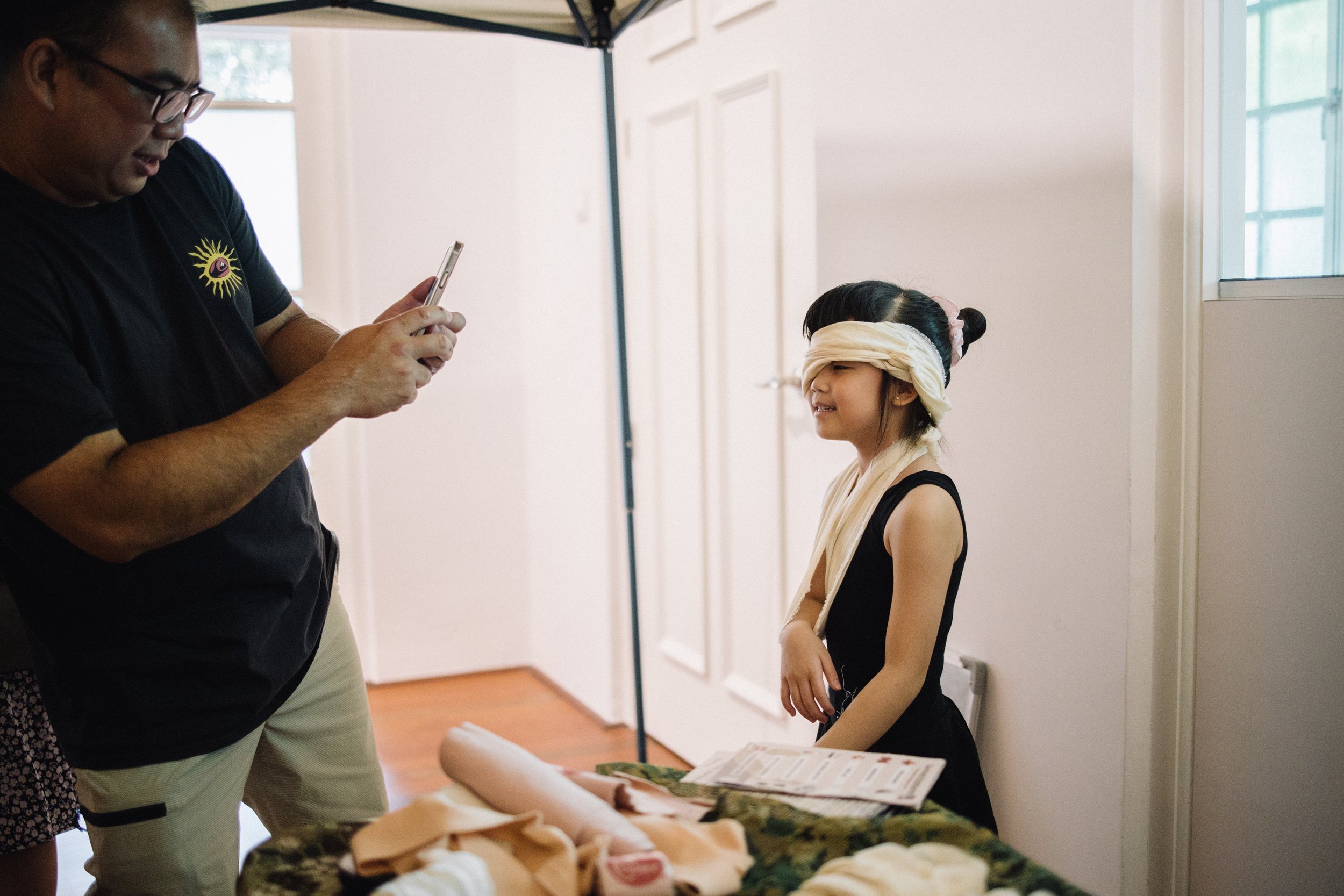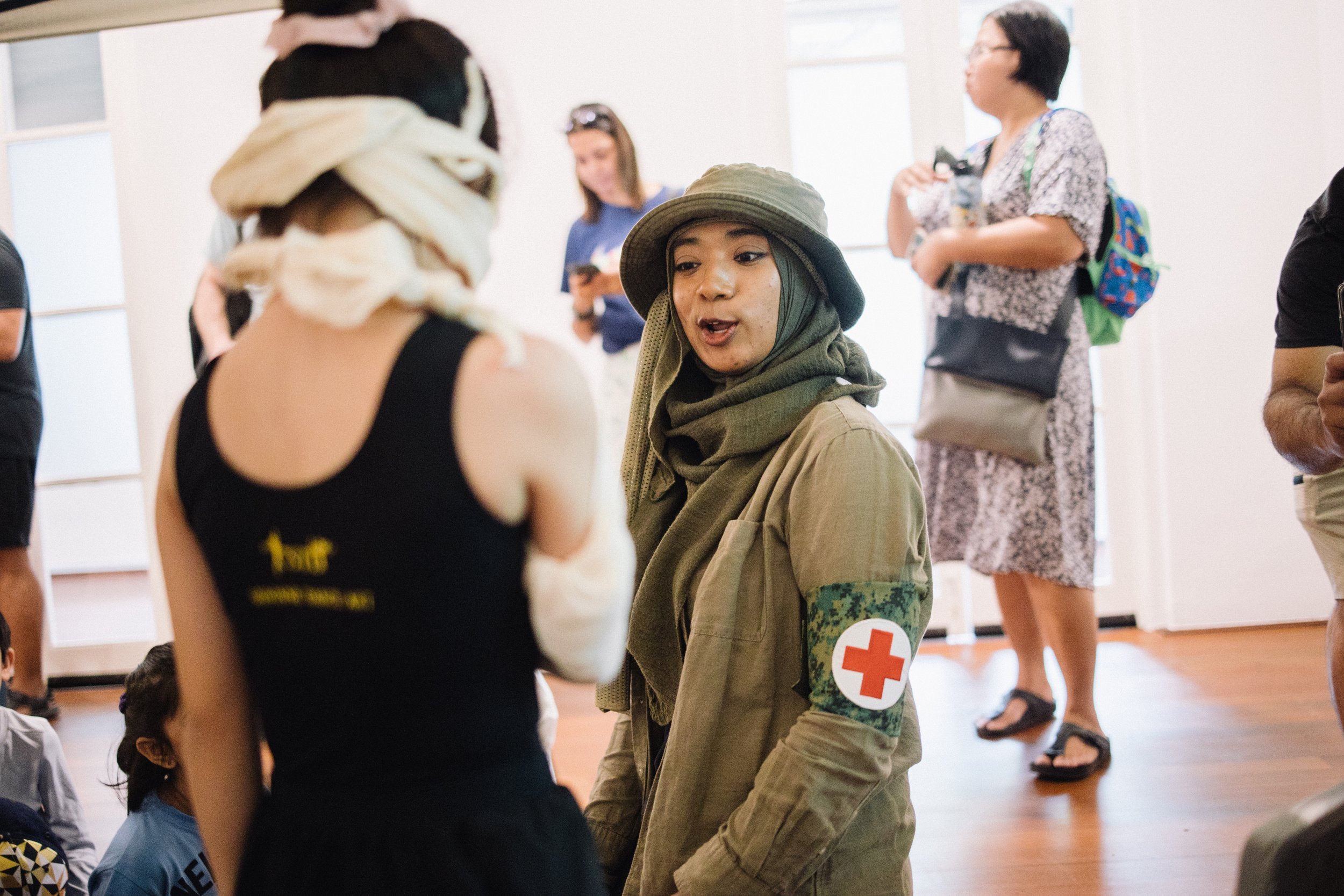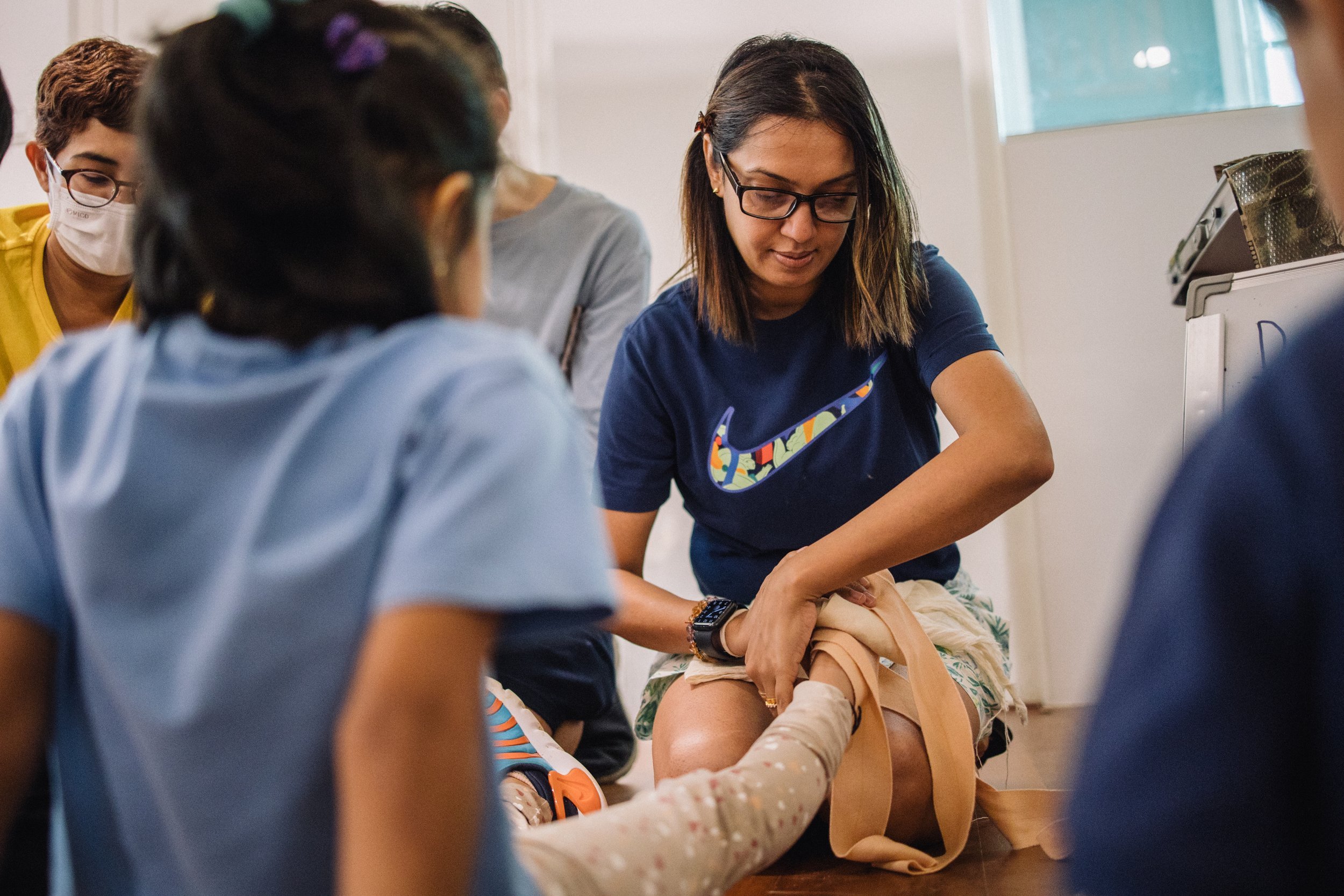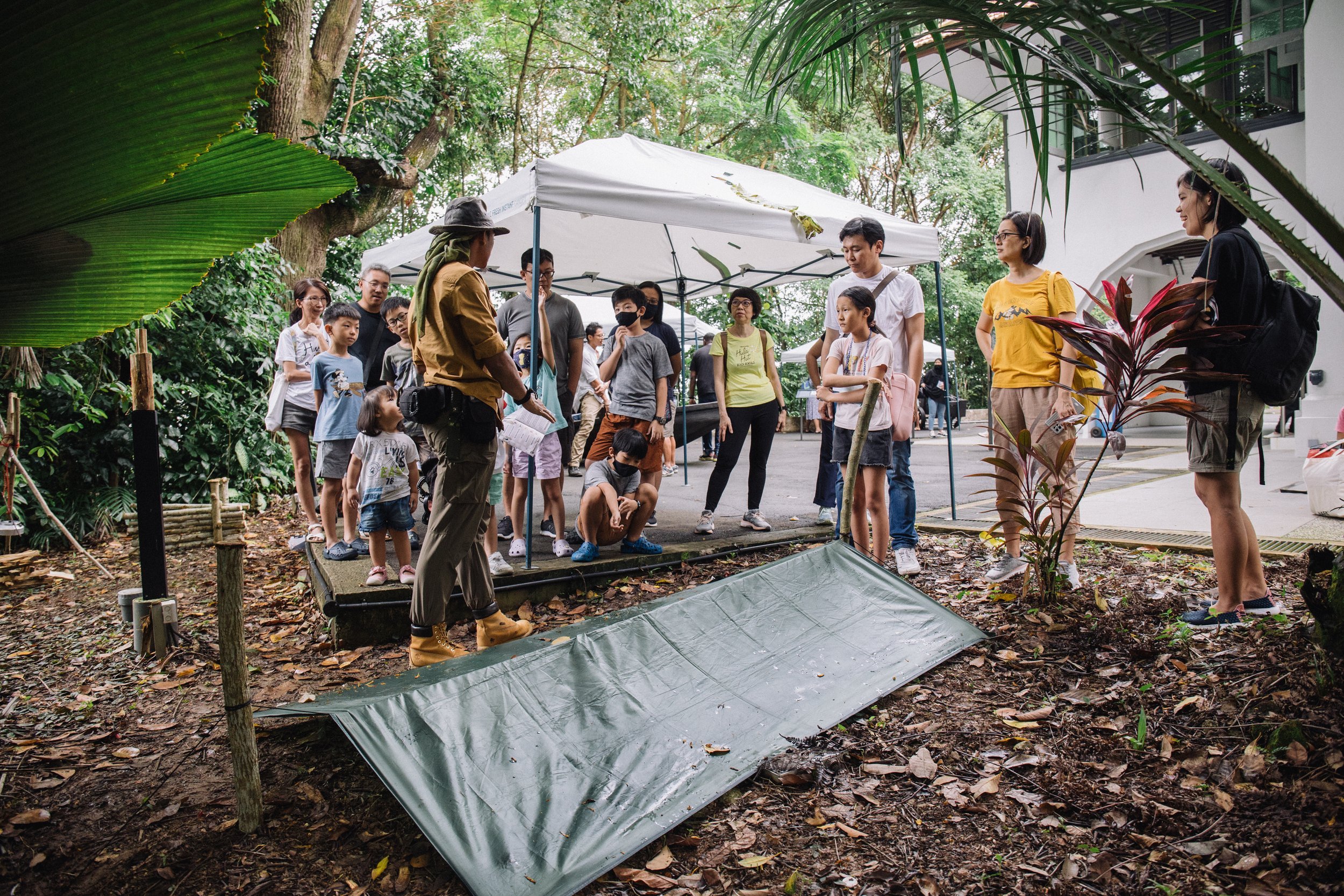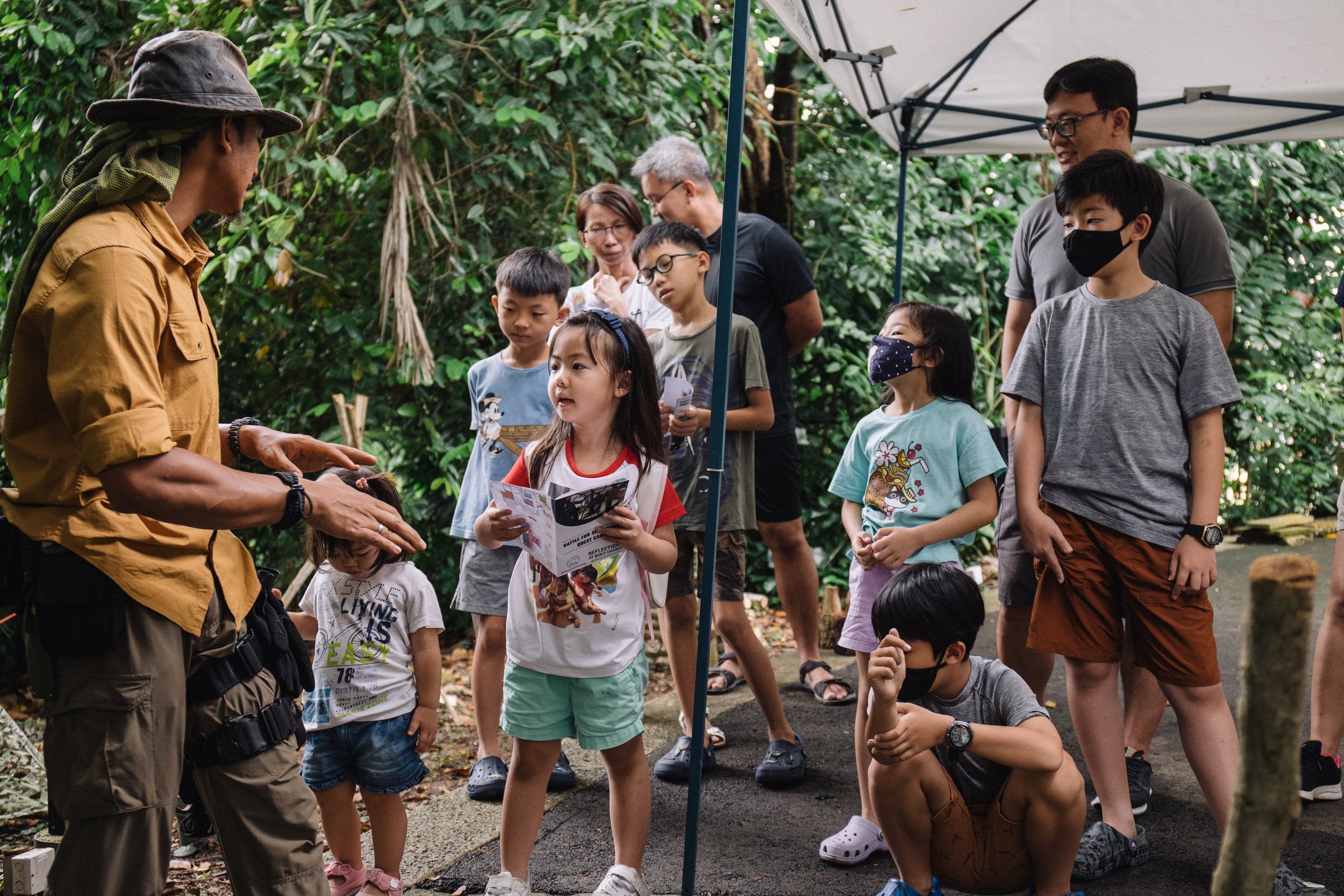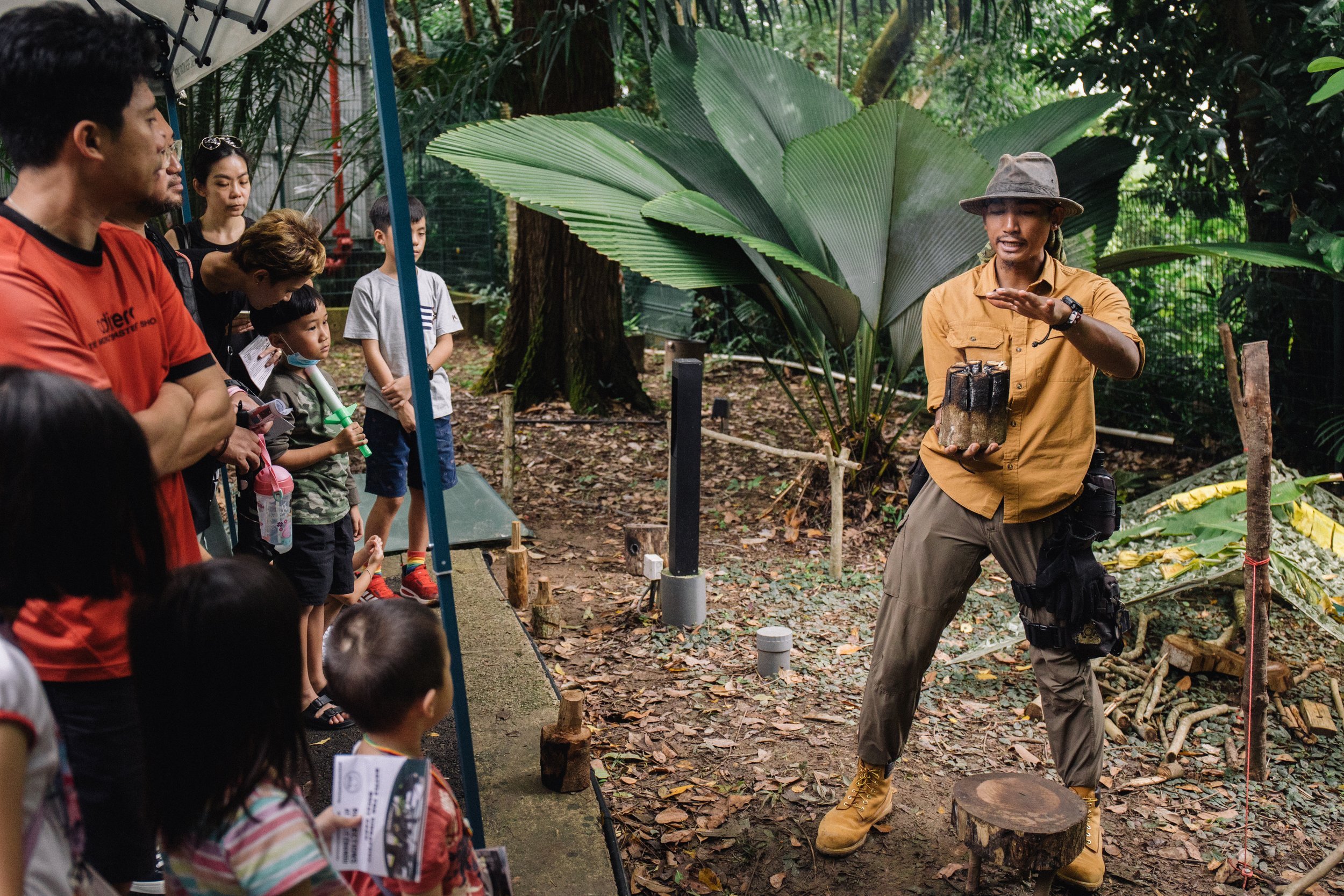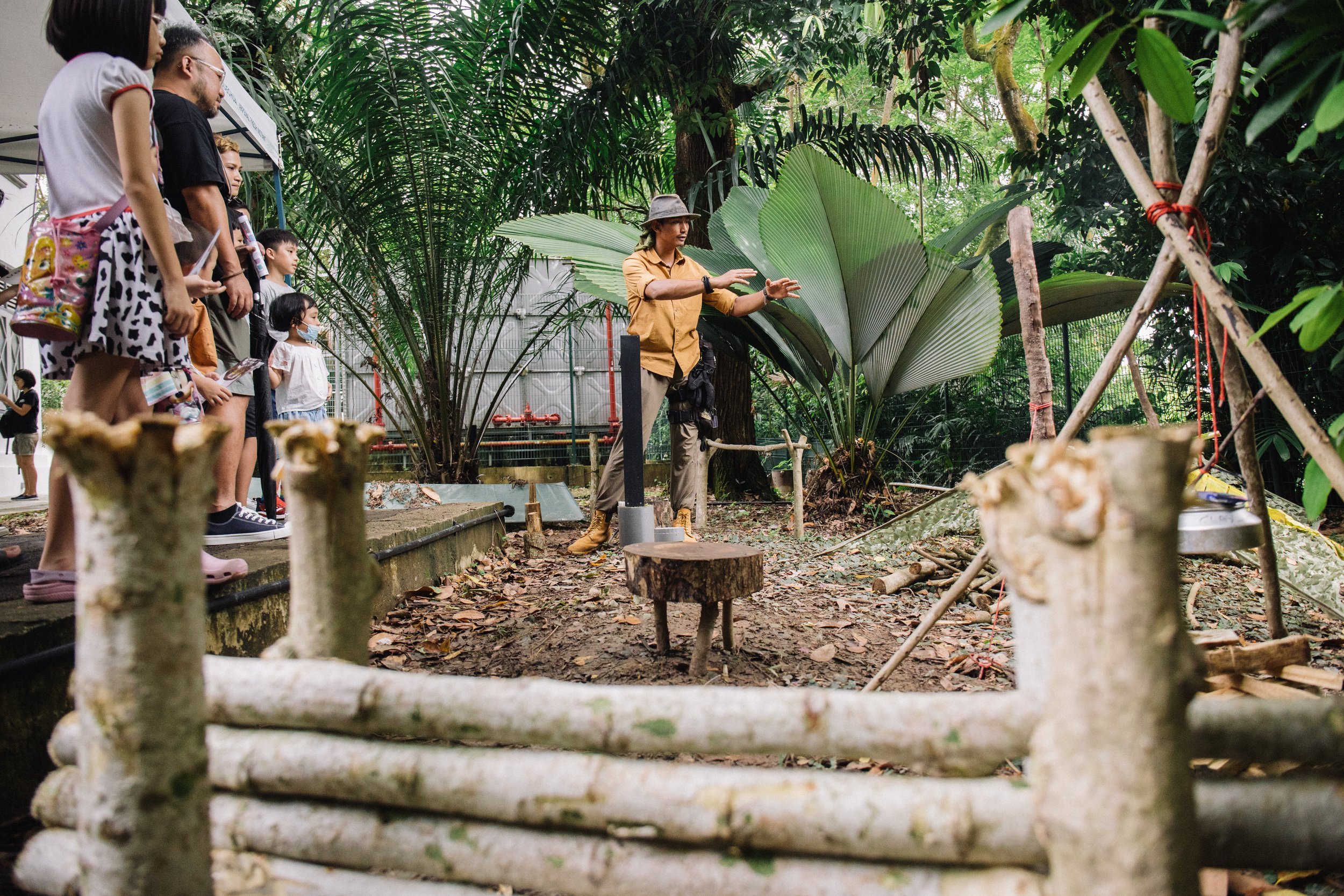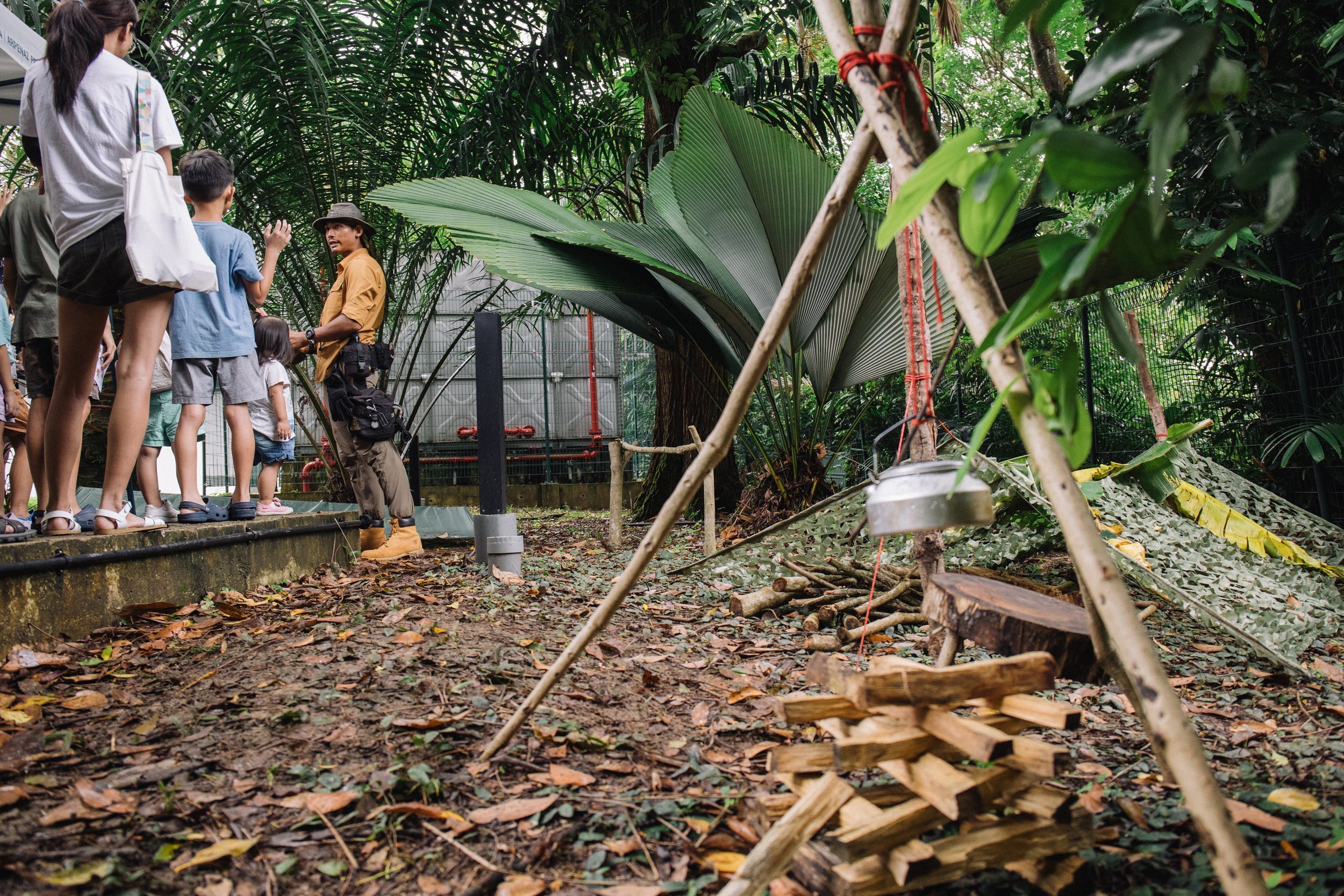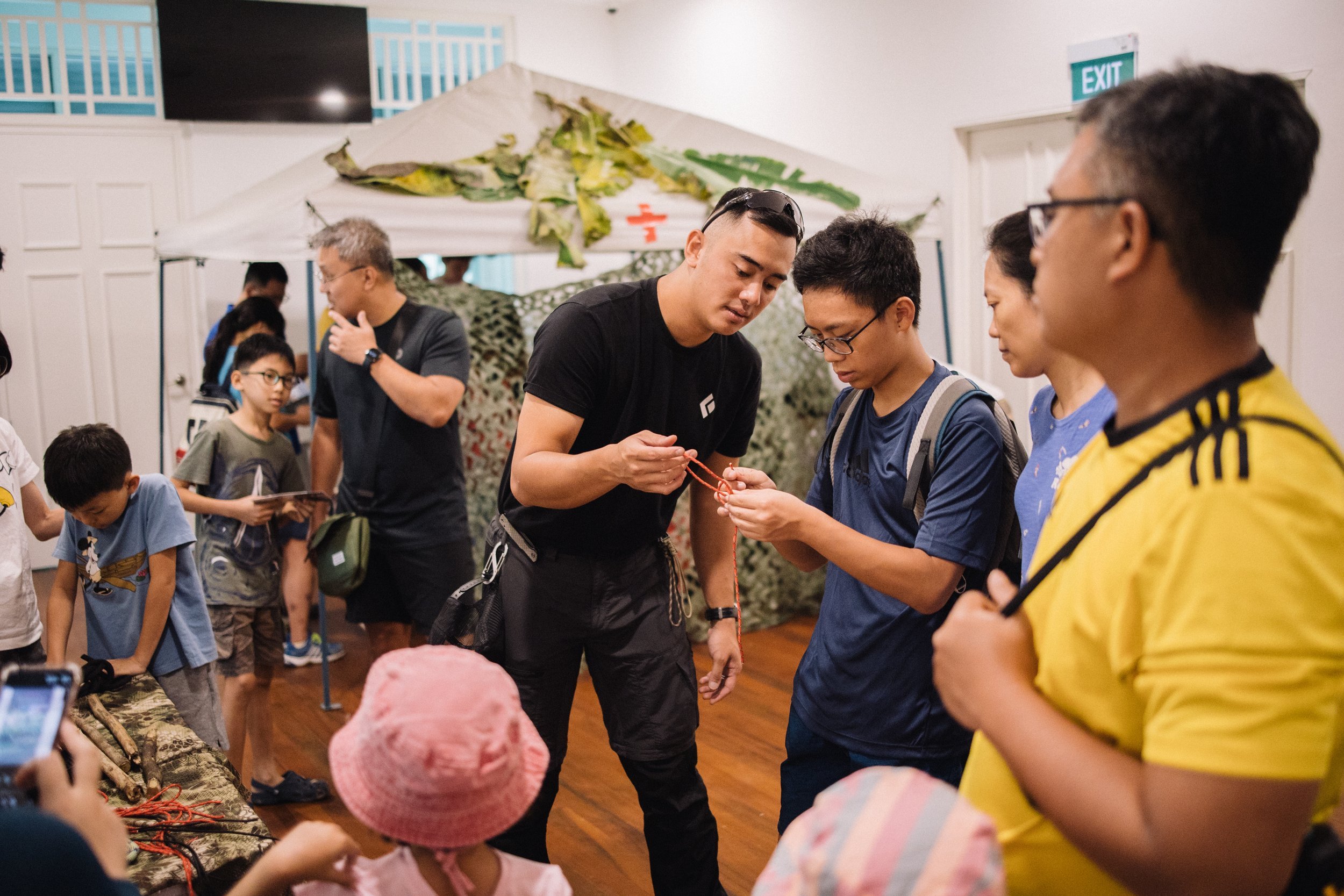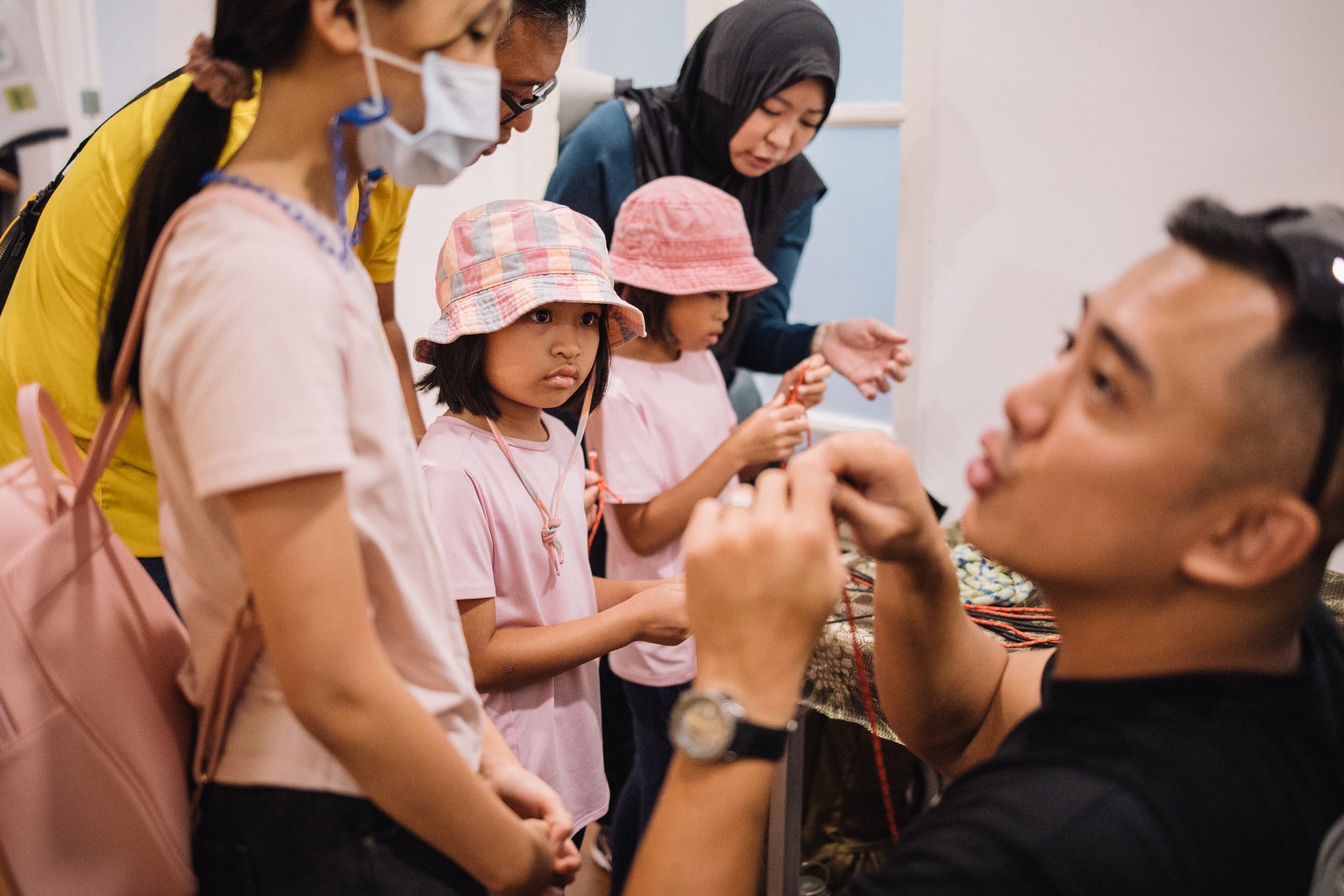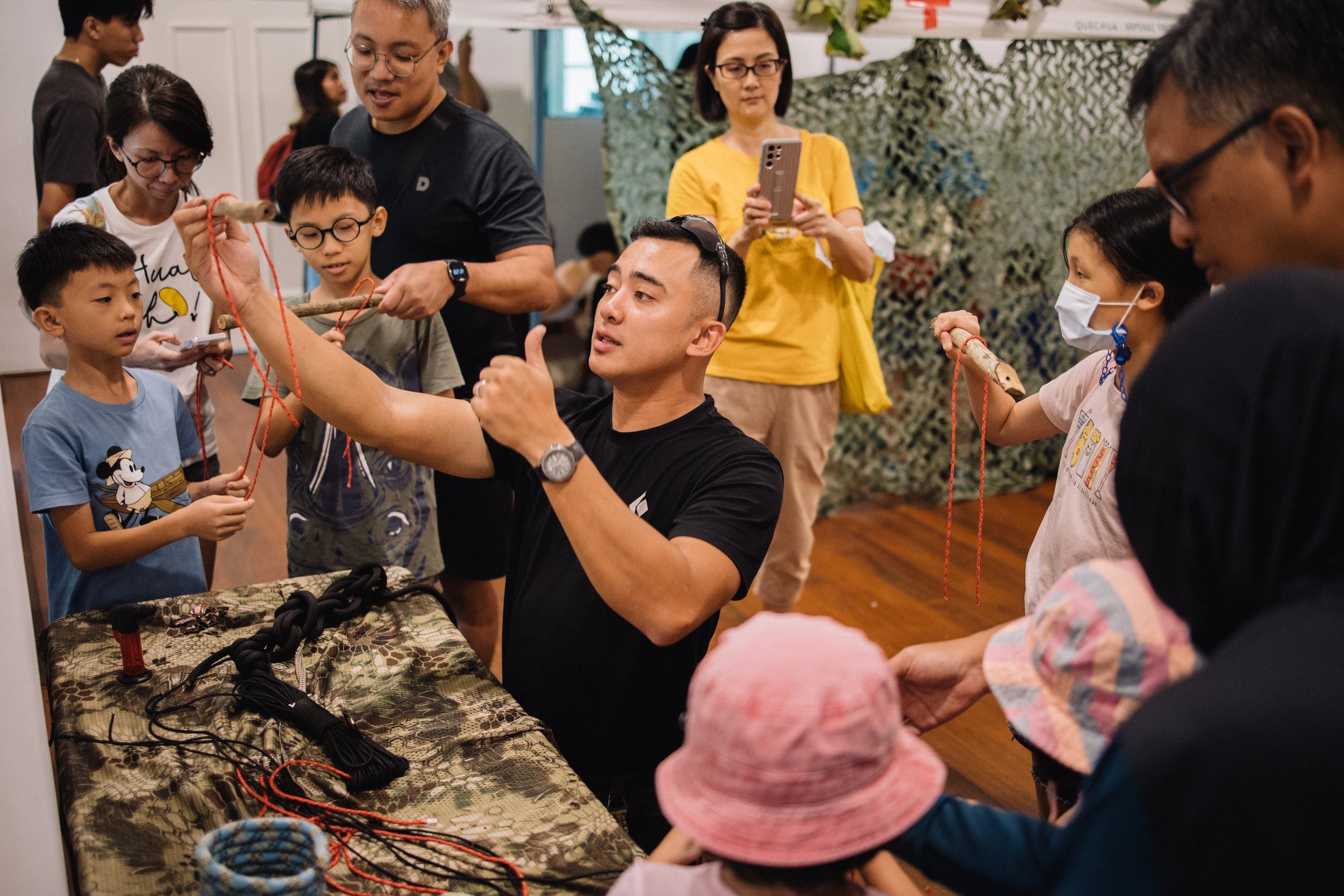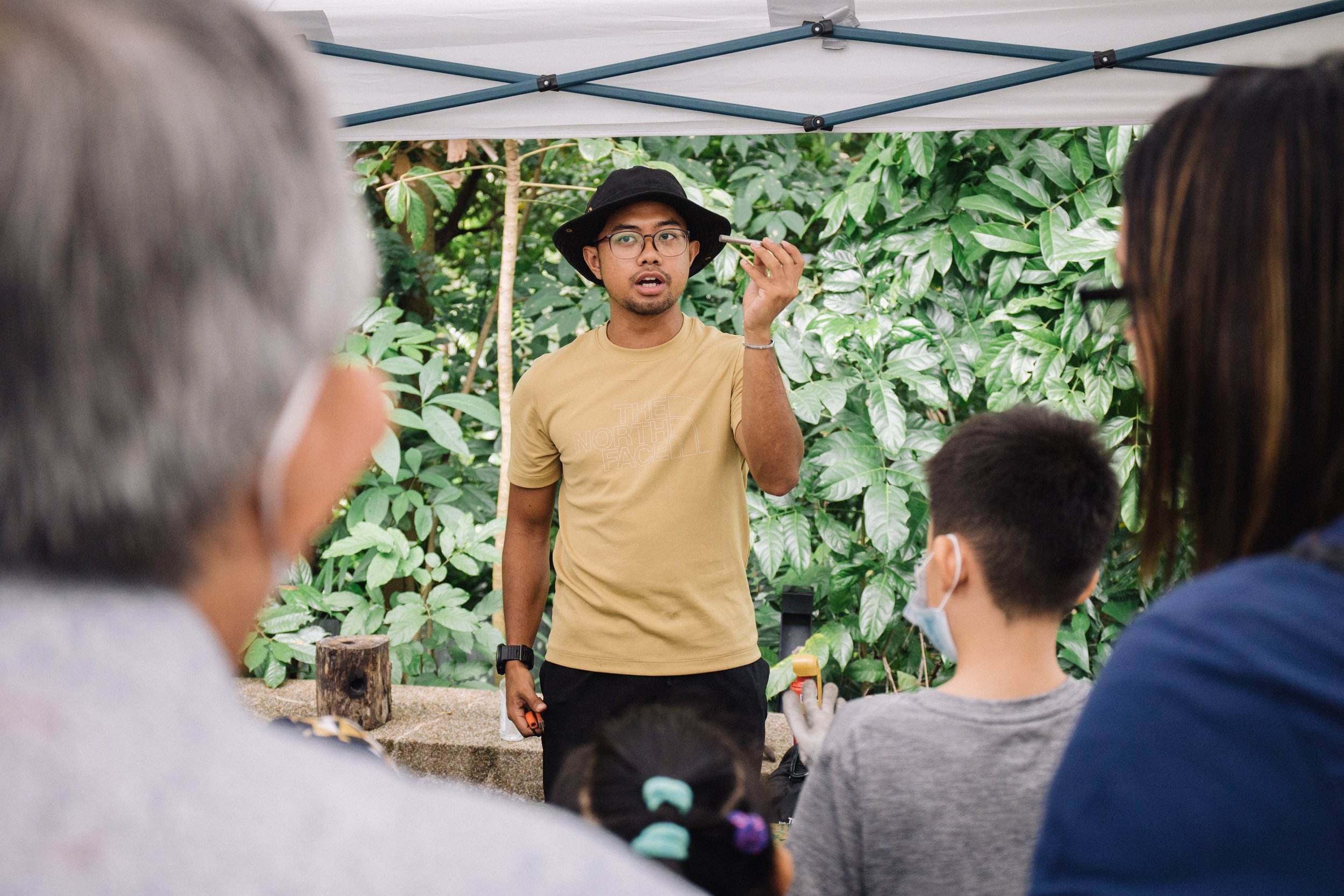A Different Way for Parents to ‘Survive’ Your Weekend
What is this about?
Beyond Expeditions joined hands with the National Heritage Board in February 2023, to host a series of six survival skill stations at Reflections at Bukit Chandu, where parents learnt to ‘survive’ (and have fun!) with your children, and even got to leave with a mystery gift too!
Dates: 11th & 12th, 25th & 26th February 2023
Location: Reflections at Bukit Chandu
Check out these Instagram Stories to check out what parents and child got to experience with us!
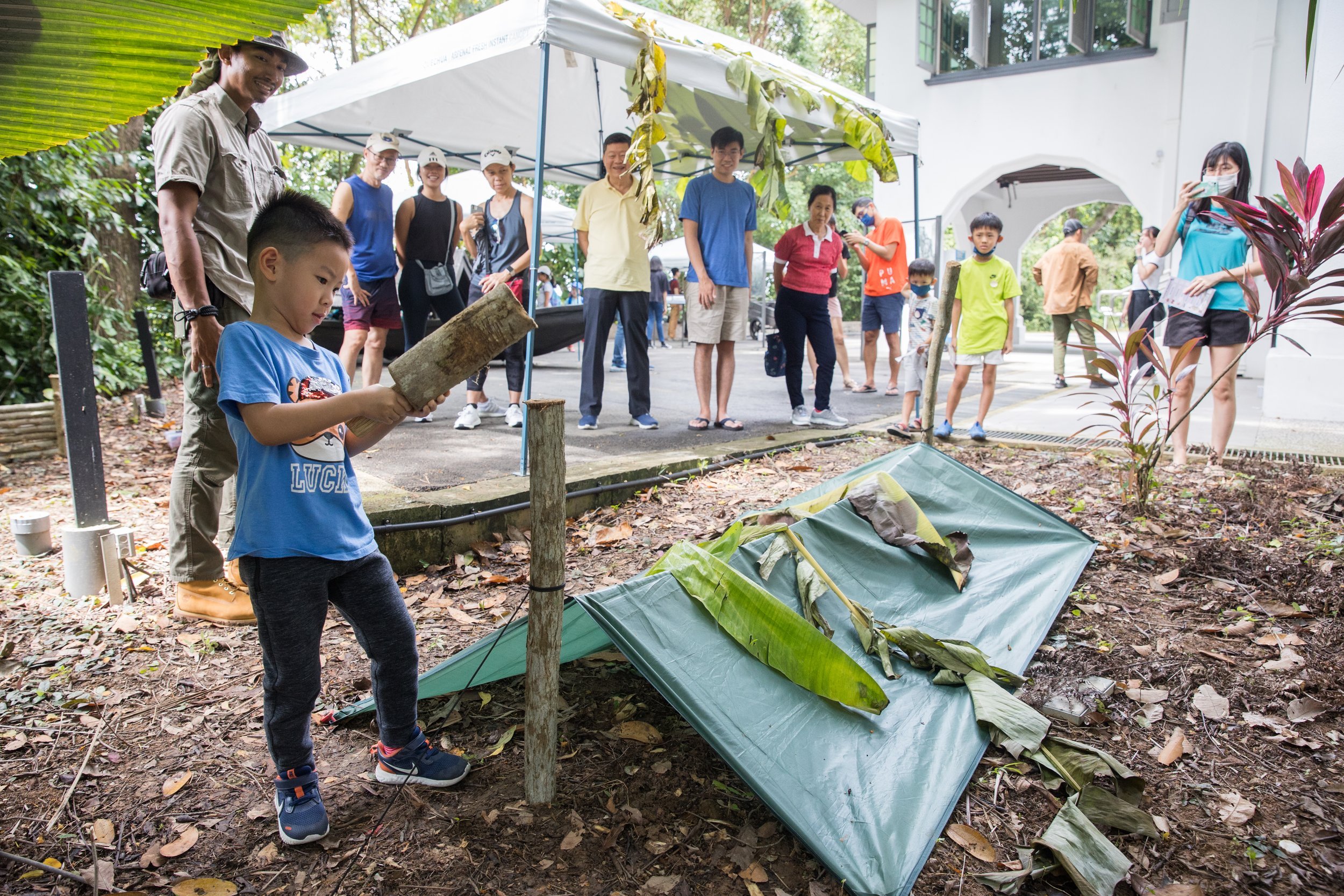
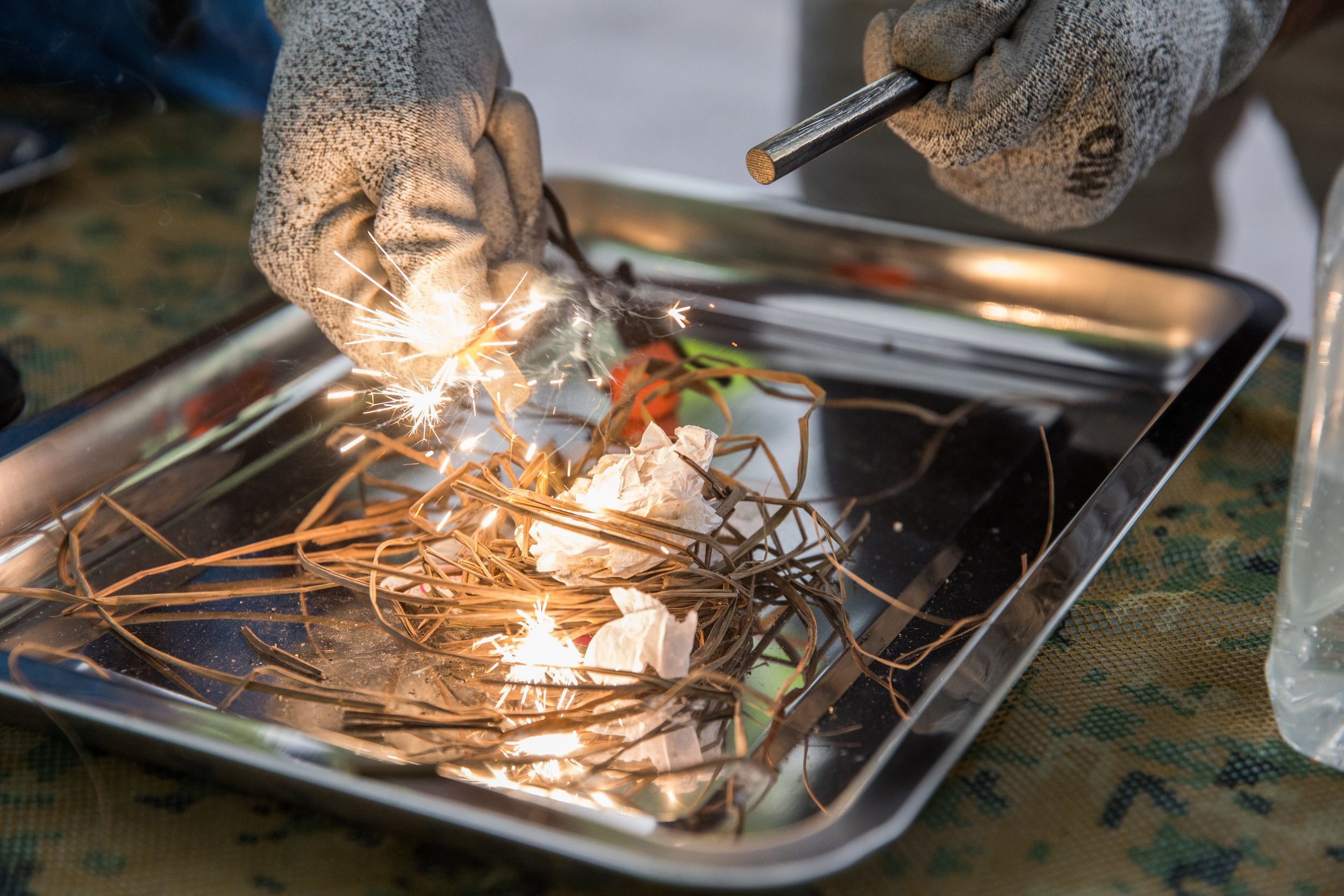
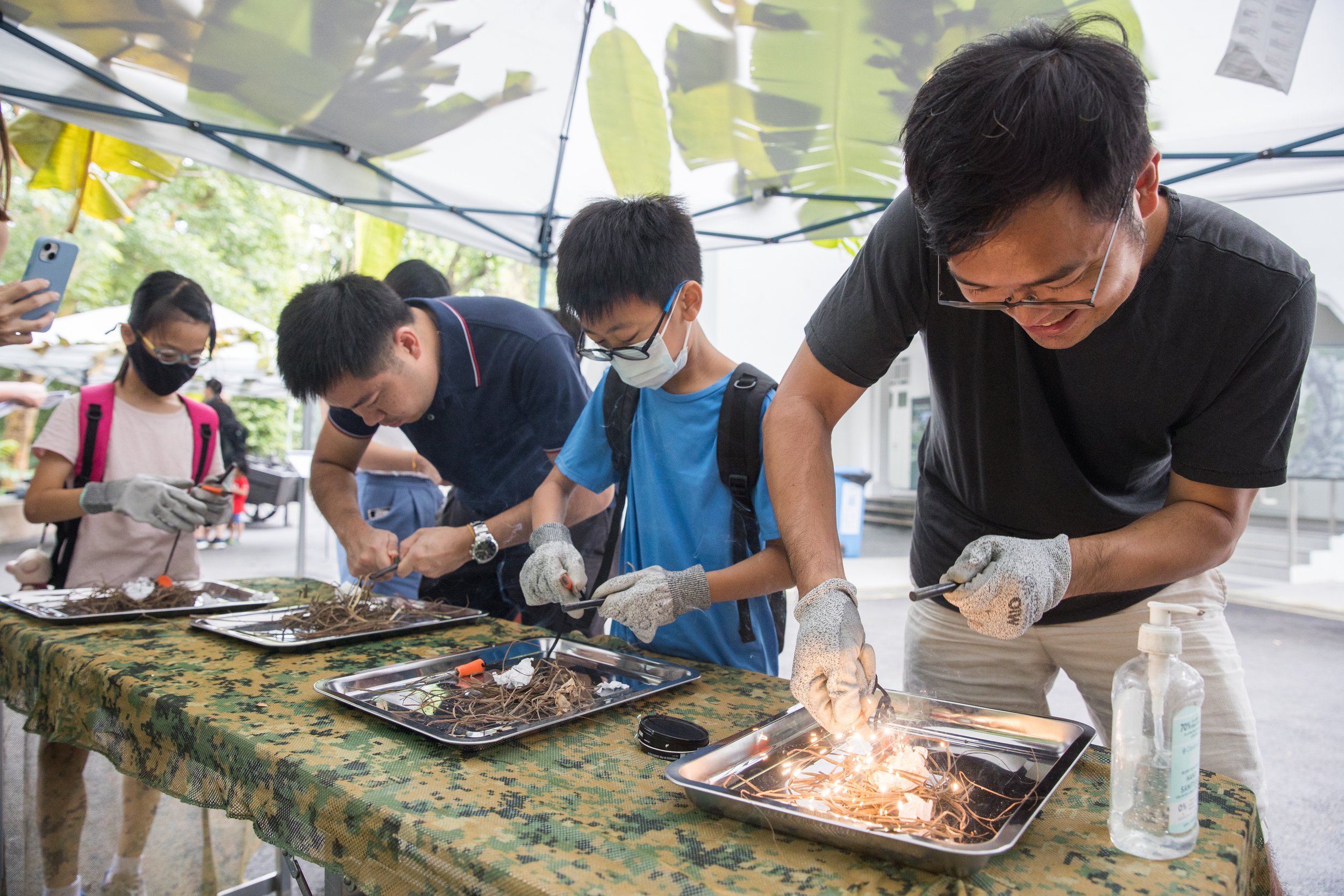
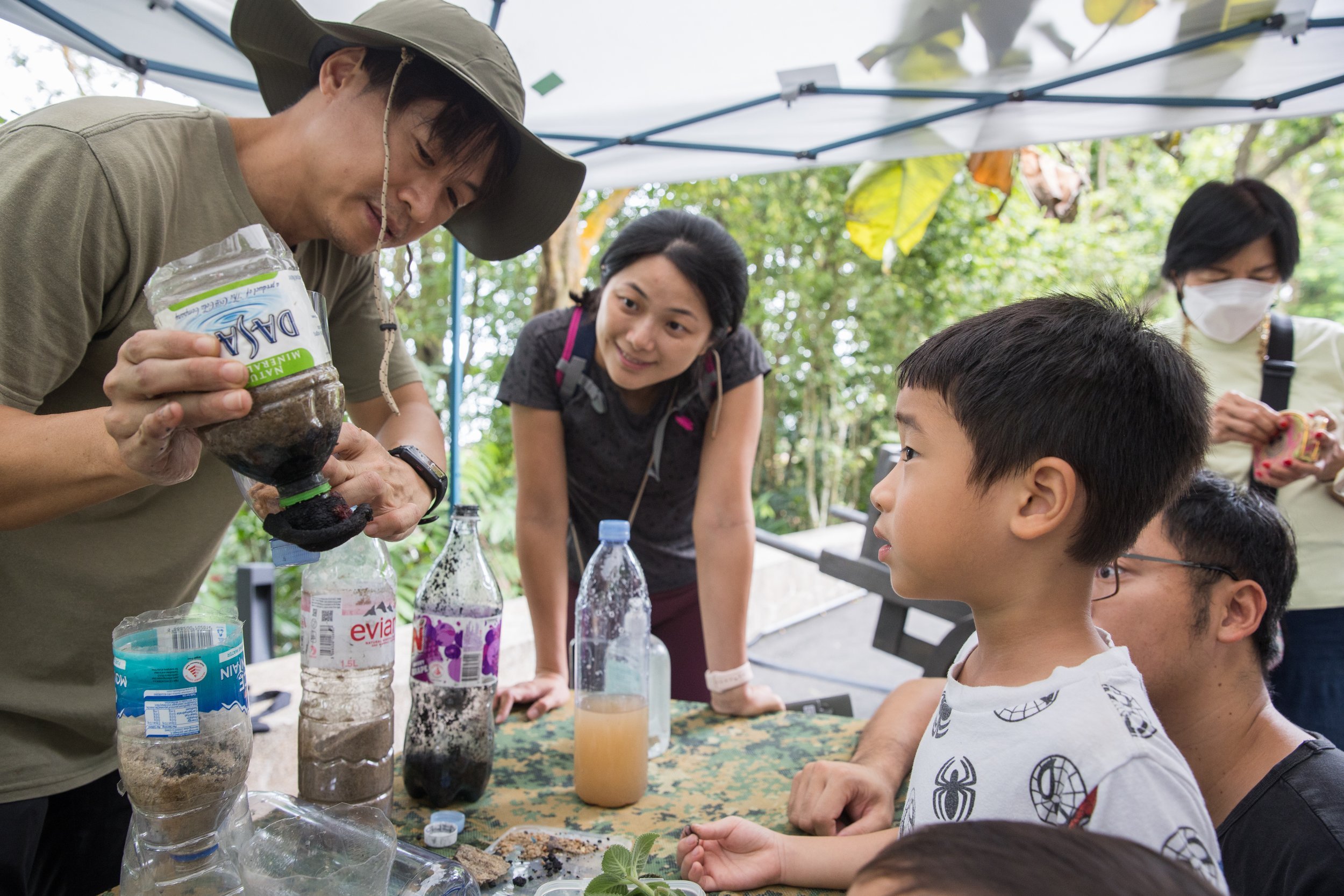
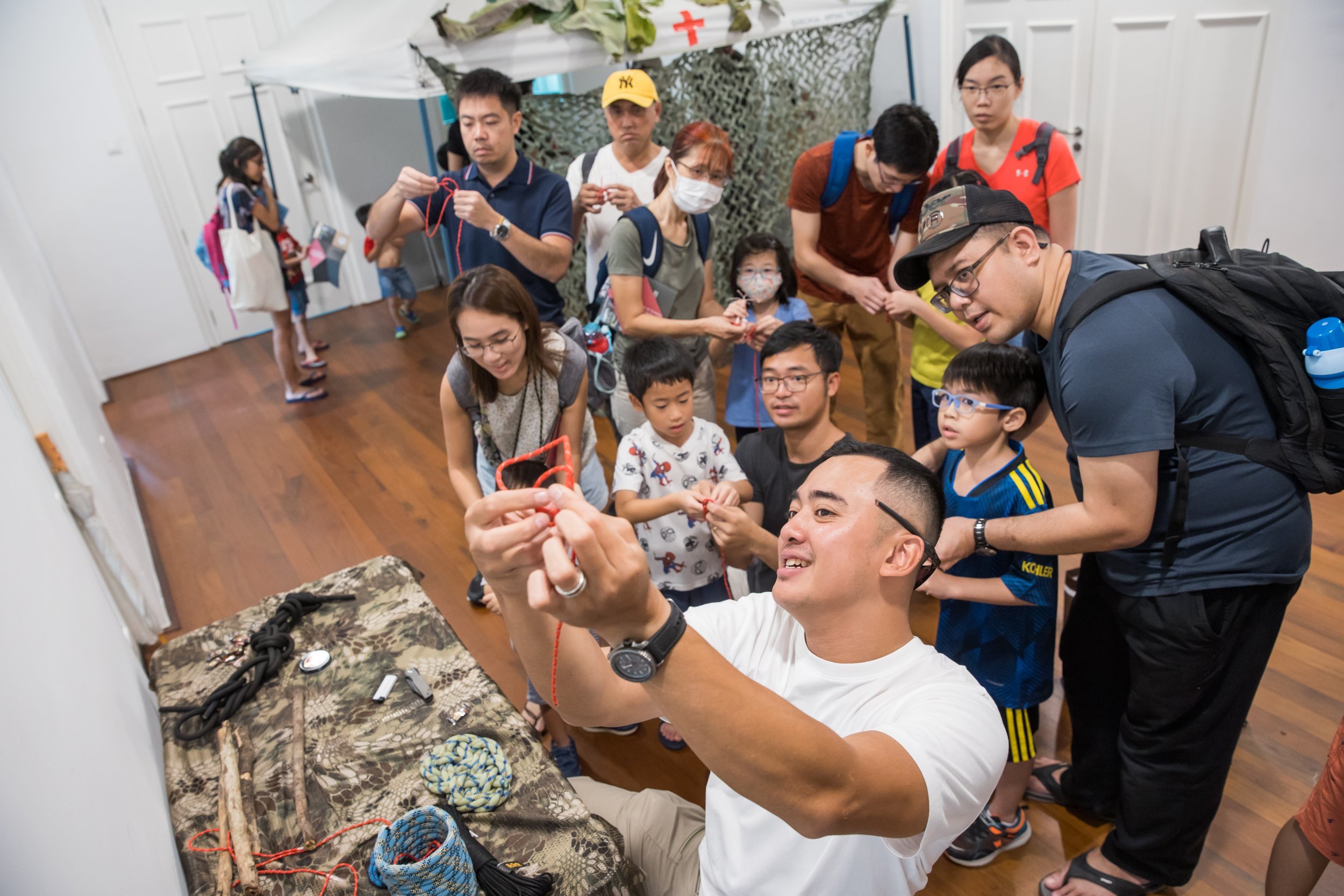
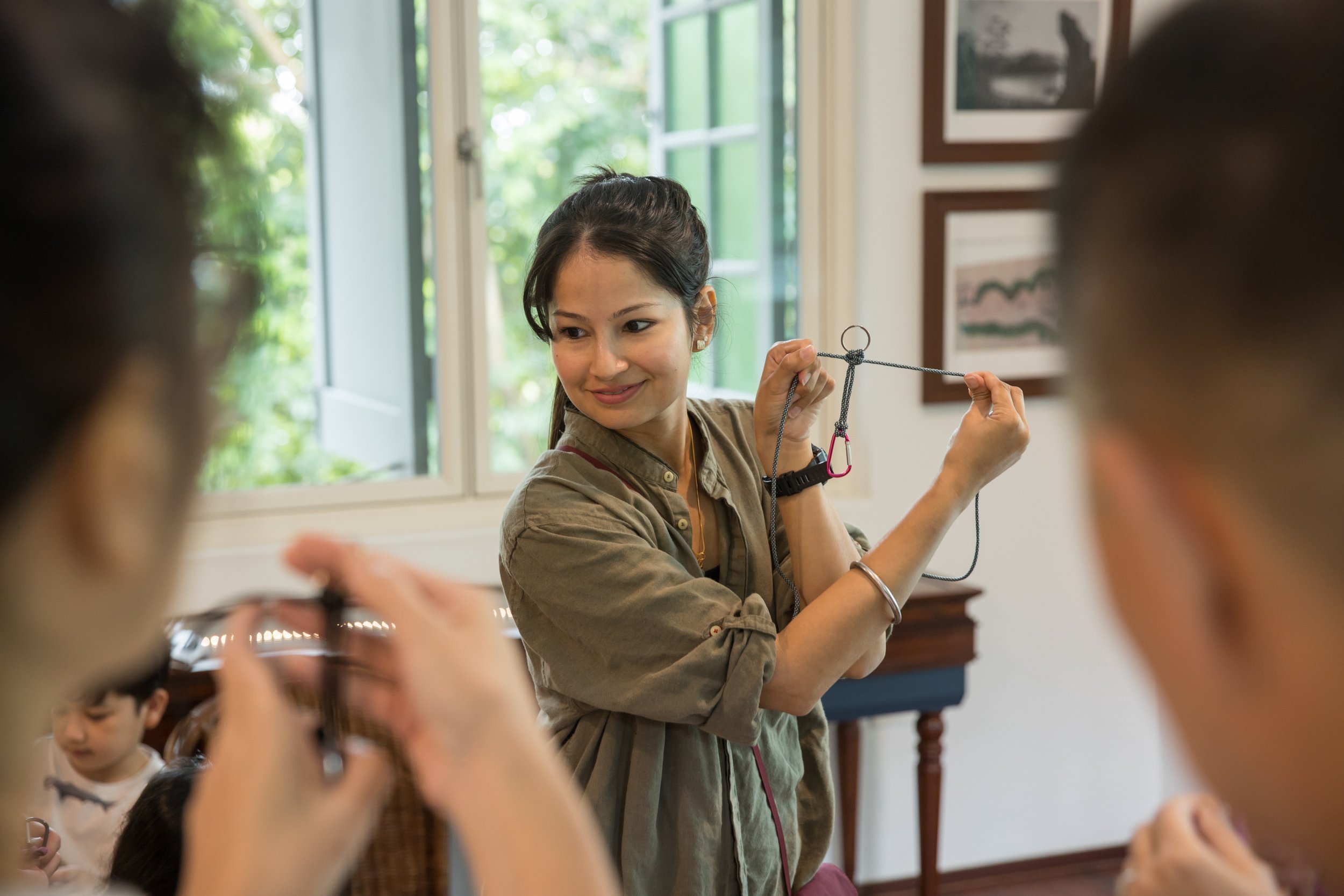
Photo credit: Reflections at Bukit Chandu.
I am way older than 5, but here I was at the museum of Reflections at Bukit Chandu, about to experience the six different survival skill stations Beyond Expeditions is hosting this weekend for parents and children (I was here on the 11th of February; they’d one last weekend run going on on the 25th, 26th!).
I was caught off-guard because when I arrived at the museum midday, I stepped into a space brimming with wide-eyed curiosity and sounds of laughter from both the children and their parents. Several pairs of young adults were also moving through the stations, looking largely out of place yet seemingly engrossed with the ongoing demonstrations and activities.
The museum had become a space filled with curiosity and excitement, learning and exploration.
Be it learning to save themselves or a friend, filtering clean water from murkiness, learning how to tie three types of knots and lashes, building natural shelters or an opportunity to see different compasses and what a Swedish stove looks like, these six stations provided participating children an eye-opening time over the weekend.
If you’re a parent of young children and these are what you want your child to experience during the weekends, scroll right to the end to check out the various experiences we offer for you and your family! This event might be over, but we have several other ongoing options for you and your child to explore.
Read on to get a feel of the six stations you and your child would have experienced with Beyond Expeditions’ team in Reflections at Bukit Chandu!
Navigation
What your child will learn:
5 ‘D’s of navigation
How to use different compasses to navigate from point A to B
During the Fall of Singapore, bomber compasses were useful in navigation and plotting the direction of mortar and machine-gun fire.
Our instructor, Yok, first introduced to the young ones the definition of navigation, followed by the 5 ‘D’s; Destination, Direction, Distance, Duration and Description. He proceeded to teach us the purpose of each one when it comes to navigating, before showing us how to use the different compasses the soldiers had back then. Every young mind was captivated, as their hands turned the device round and round in curiosity. Towards the end of this group’s time at this station, the instructor will then ask several questions to help the children understand the concept of time and distance better. This was undoubtedly one of my favourite moments at this station.
Instructor: “So, how long do you think it takes to travel 200m?”
Correct answer: 2 minutes
Answers given: “2 days!” “30 days?” “3 weeks!”
Instructor: “Can we use the sun as a ‘Description’”? (revealing one of the answers here before your visit, oops!)
Correct answer: No, because it isn’t a constant.
Answers given: *a collective cheer of “Yes!”*
Instructor: “Then what happens when it’s night?”
Answers given: “We use the moon!”
Instructor: “Then in the day?
Answers given: “The sun again!”
Basic First-Aid
What your child will learn:
Various first-aid skills for different kinds of wounds, using items you can find in a first-aid kit
How to use easily accessible resources like a shirt or a bandana to bandage a wound.
During a battle, injuries were inevitable. All soldiers needed to learn basic first aid, which would help them to attend to the wounded.
At this station, participants will learn how to save a friend in times of war; or, to be more relevant, children will learn how to save themselves and their friends when injuries happen while they’re in the wild! Our instructor, Wani, first began by guiding us through a series of steps we should follow, before approaching the injured victim. She then demonstrated various first-aid skills for different kinds of wounds, using items you can find in a first-aid kit, or even with everyday items like your shirt, and a bandana.
It was fascinating to see how captivated and incredibly engaged the children were by the instructor’s questions and explanations, regardless of how young or old they were. A 5-year-old girl had her eyes seemingly glued to our instructor even as she moved around for her demonstration; another 11-year-old boy was constantly fidgeting, yet also asking questions that displayed his attentiveness to what was being shared. Even the parents were curious; a mother seated next to me was excitedly talking to her daughter about the various items our instructor was sharing, while another mother was leaning forward with her son as they intently observed the different demonstrations.
Water Filtration Station
What your child will learn:
How soldiers obtained clean, drinkable water from dirty water
The correct sequence of materials to layer in a ‘water filter’.
Kampong Tengah Pepys Road was known for a freshwater spring from the nearby hillside. The water was channeled into small enclosures that residents used for bathing and washing. It then flowed into a large drain that Lieutenant Abbas Abdul Manan and his men were rumored to have crossed after the Battle of Pasir Panjang.
At this station, we wanted participants to imagine themselves as one of the men crossing the drain. What would they do if they ran out of supplies and needed water for survival?
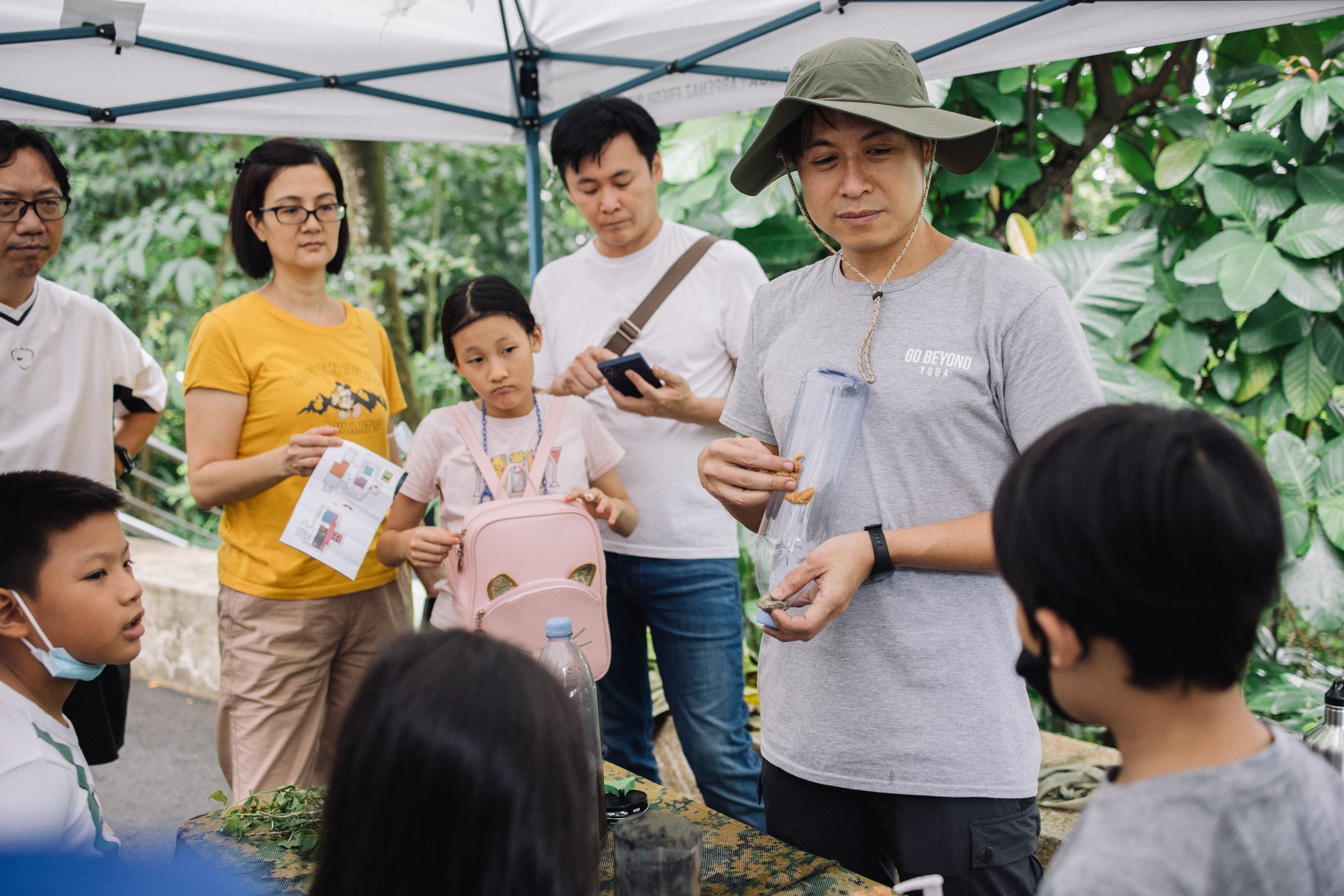
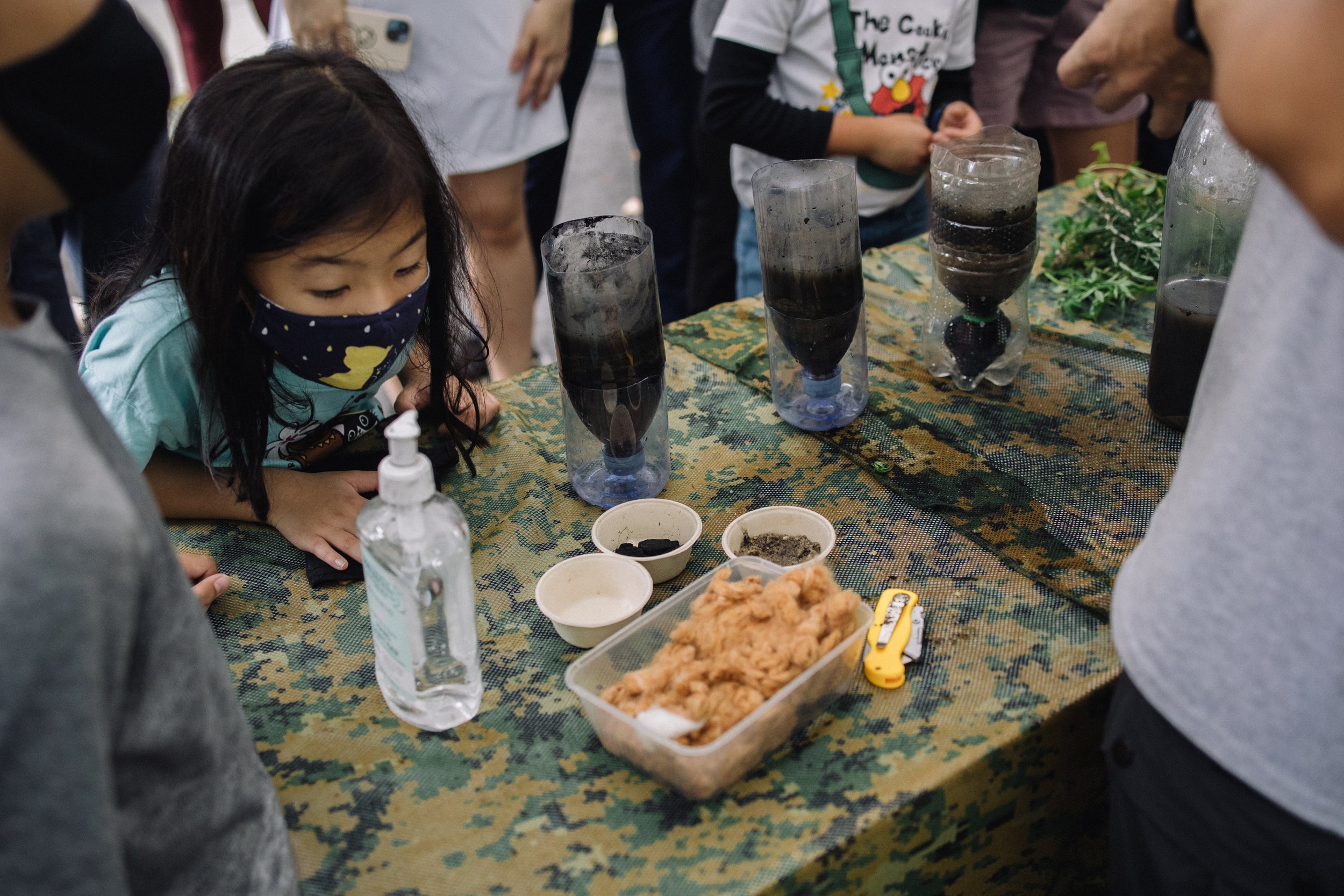
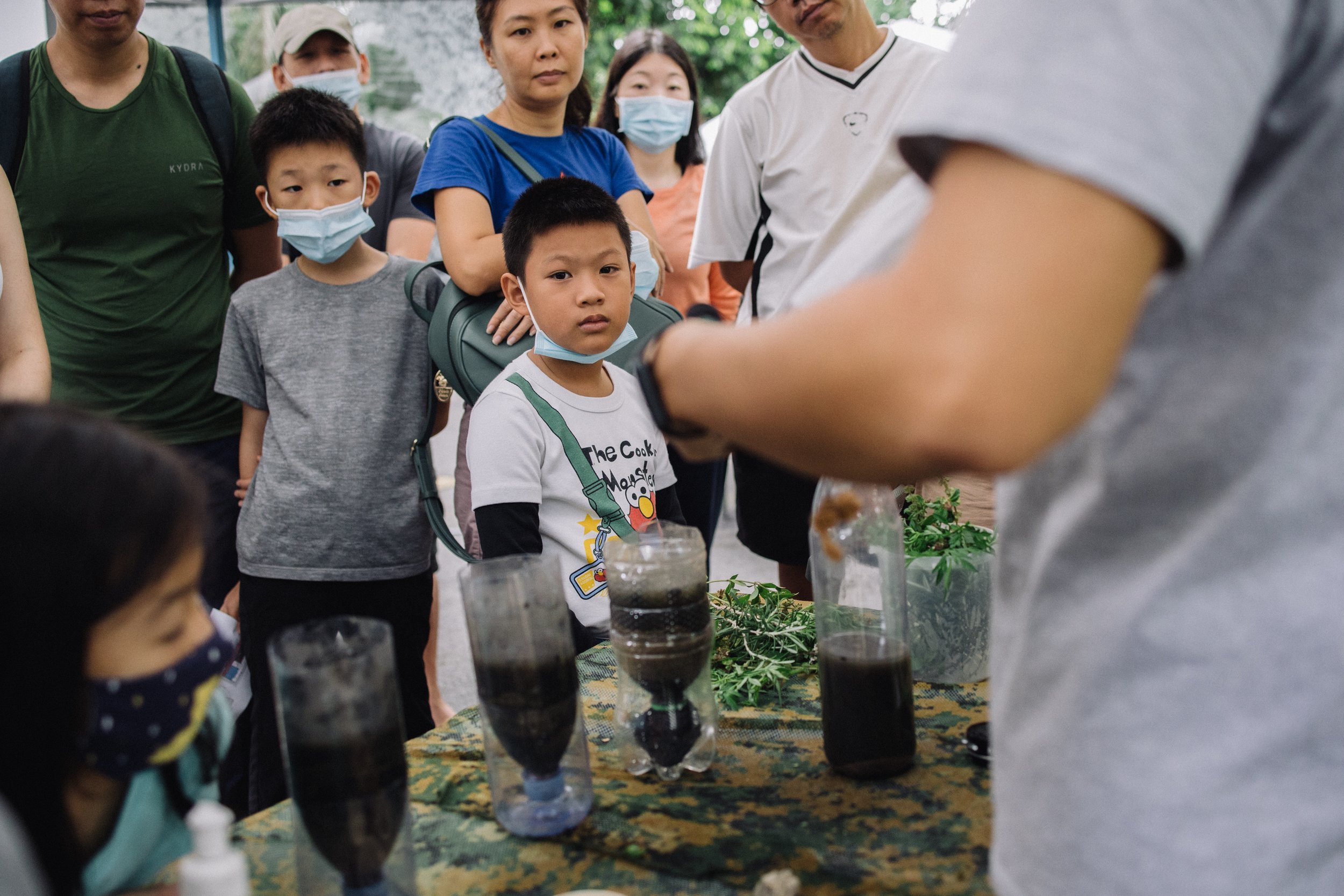
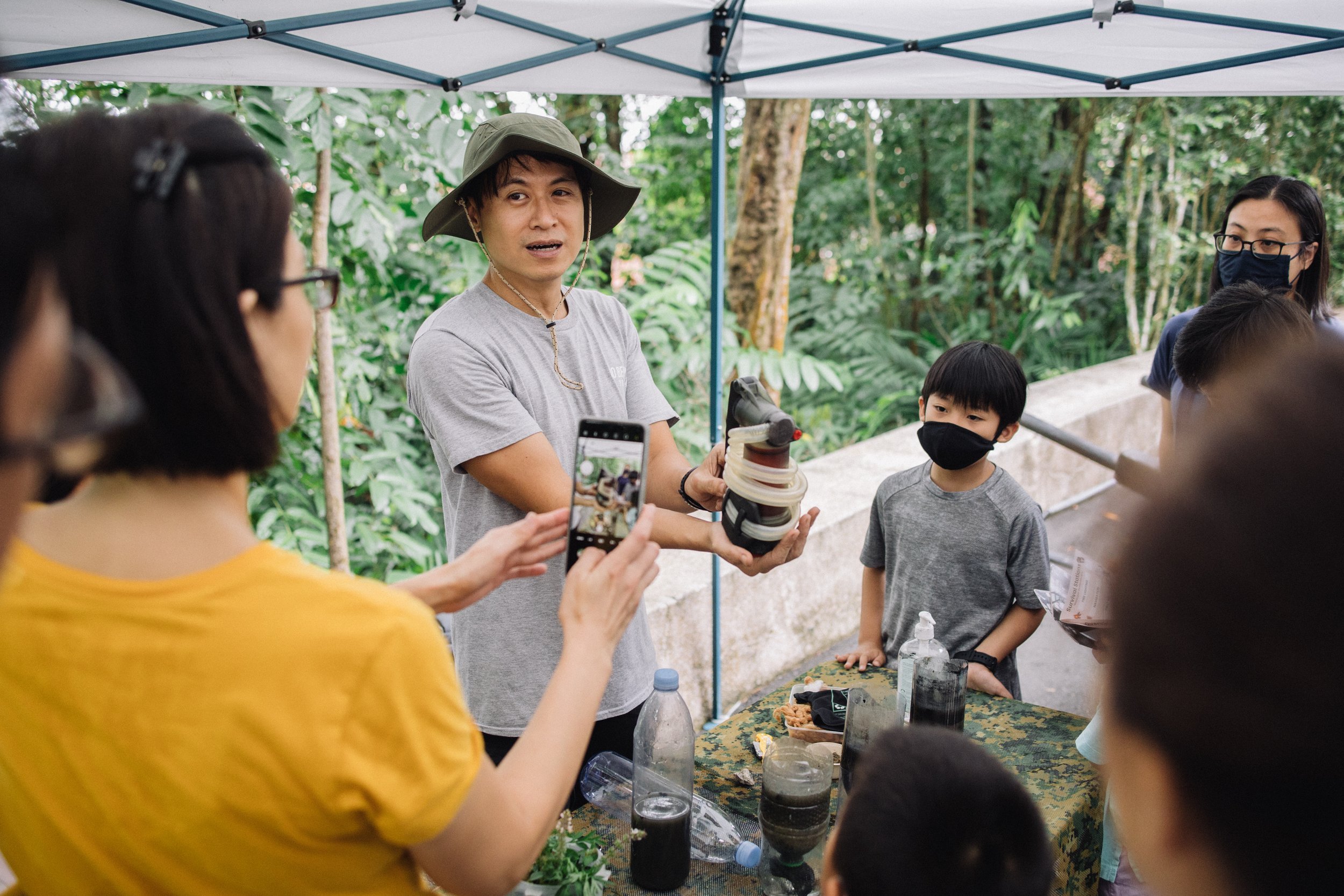
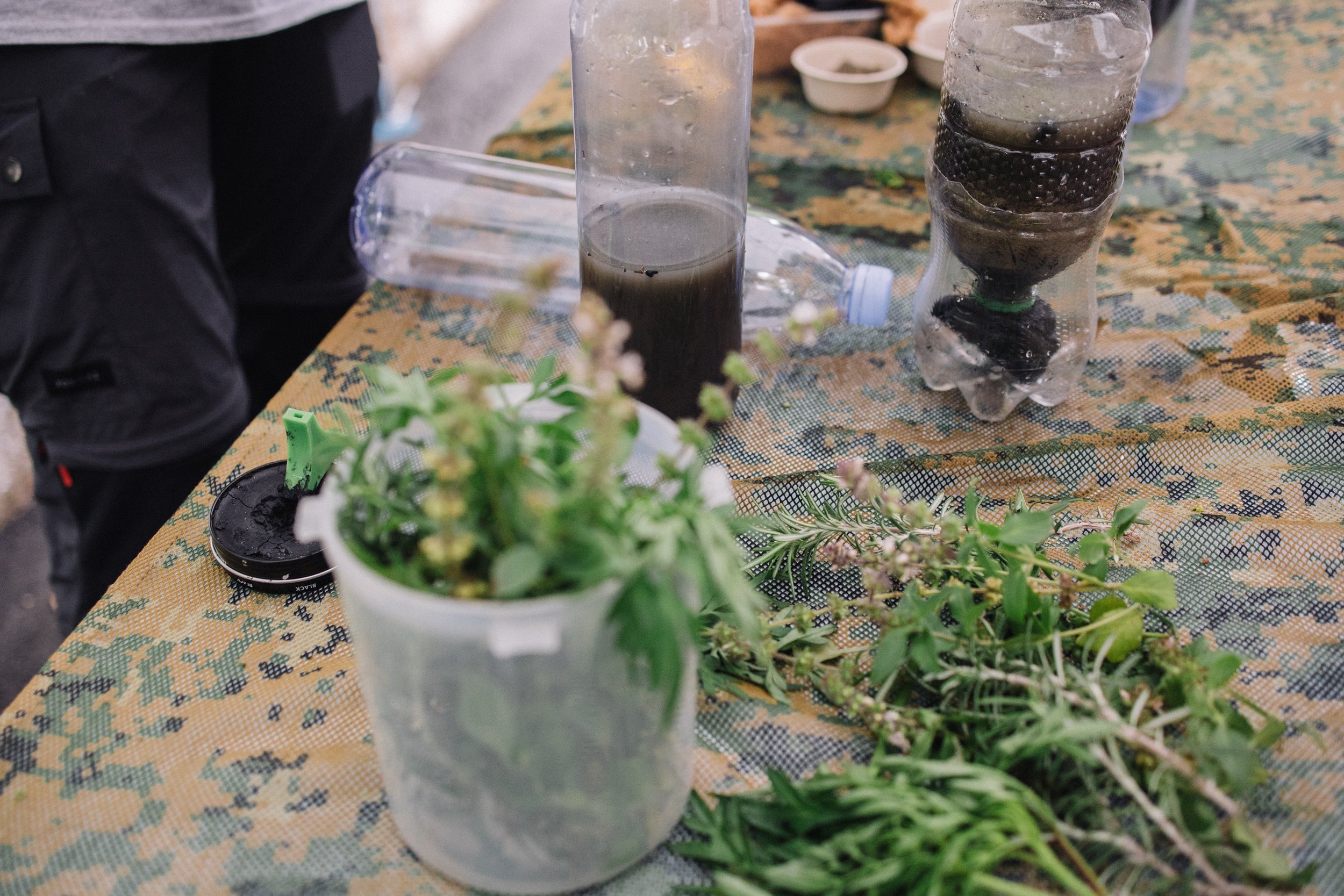
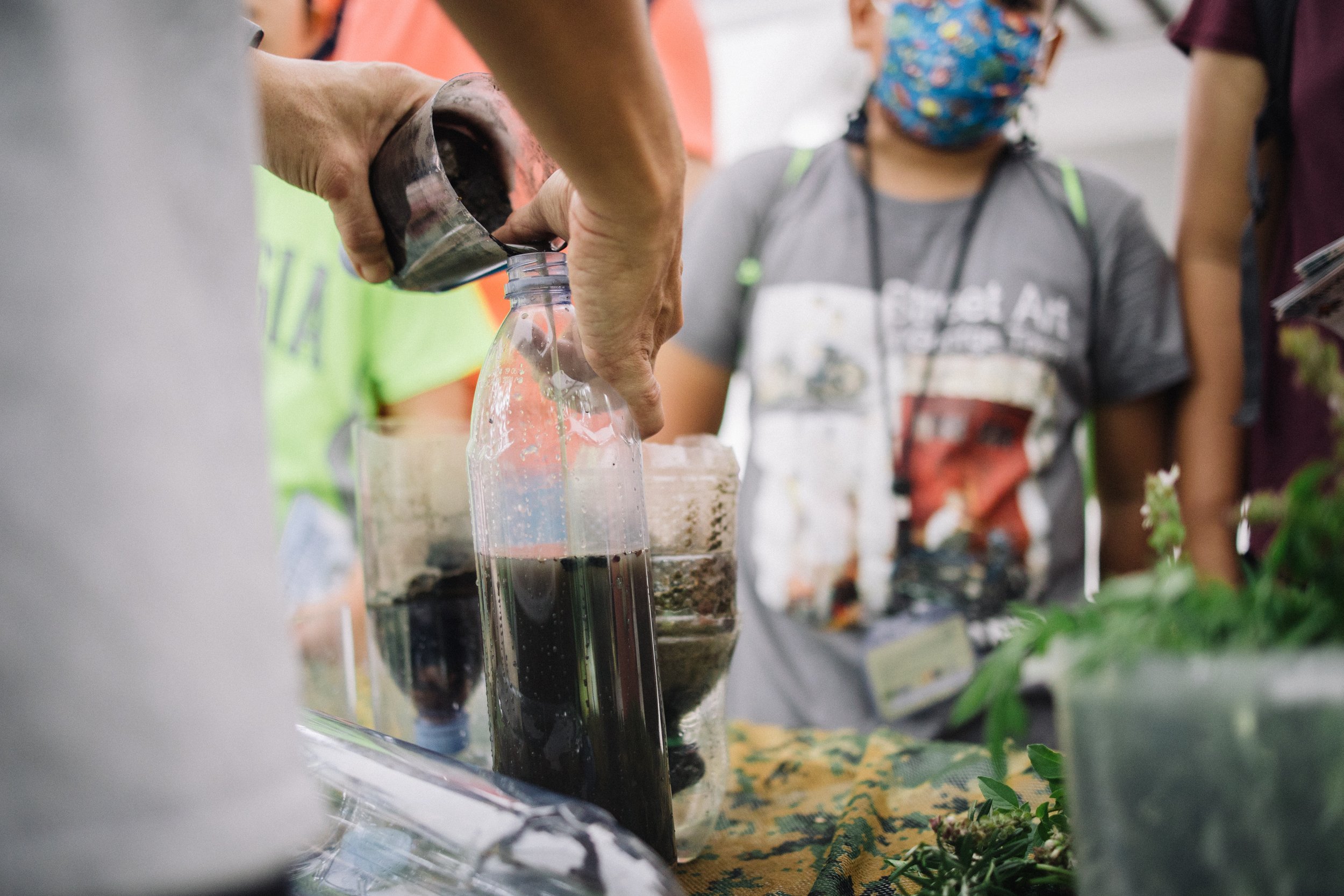
Our instructor for this station, Chun, taught us the exact formula for filtering dirty water. You and your child can try this at home with a spare plastic bottle! We first layer in cotton, followed by layers of wet sand, charcoal, and lastly, stones. The sequence is important, so that dirty water flows through the larger sediments first. After Chun’s explanation, children were beckoned to pour black murky water into the filter. They saw clear water dripping from the other end of it, leaving many of their tiny faces filled with awe. Chun then passed some herbs around for the children and parents to smell, inviting us to guess what they were. He then revealed their identities; rosemary and thai basil, explaining that these herbs can be added for a refreshing twist in flavour.
Natural Shelter Station
What your child will learn:
How to build a Natural Shelter in the wild
What a Wooden Bushcraft Wall and Swedish Stove look like, and how to build them
How soldiers camouflaged themselves with a tent
In the past, soldiers had to move through jungles for days or weeks. Unlike our modern days of camping, where we carry comfortable sleeping tents and hammocks, soldiers back in the 1940s had to move around light. They needed to source natural resources around them to build a shelter to rest and keep themselves dry if it rained.
“Because during the war, if you went “ah CHOO” and sneezed, your enemy will find you.” Our instructor for this station, Shah, demonstrated with a rather real sneeze, triggering a wave of giggles amongst the children and adults. He explained the importance of building a tent that allows them to open fire if the enemy passes by, and also prompted the children to be resourceful with what they have.
“We also need to learn to tie knots, which the station upstairs will teach you. But what if we don’t have string or ropes with us?” Silence descended upon the group I was with, one of the rare moments the children had no answers. Smiling, our instructor prompted the younger ones. “What’s something you always have with you when hiking?”
“Shoelace!” Several kids’ eyes lit up in realisation. “Yes, so don’t wear Crocs when in the jungle, okay?” The children burst out laughing, their parents shaking their heads and laughing along too. Our instructor then directed our attention towards several other structures we don’t typically see in our daily lives; a camouflage tent, which is often covered with leaves and vines to lower its visibility; a Wooden Bushcraft Wall, which can be easily made with chopped logs and branches to cut off wind flow to fire, especially when soldiers wanted to boil water or cook; a Swedish Stove, which is a self-sustaining stove made from only a stump with several lines cut into it. Place leaves for the fire inside, and the slits allow ventilation to flow in to fuel the fire.
The children were hanging onto every word our instructor said, intrigued by these unique sights they’d never seen or heard of even in school.
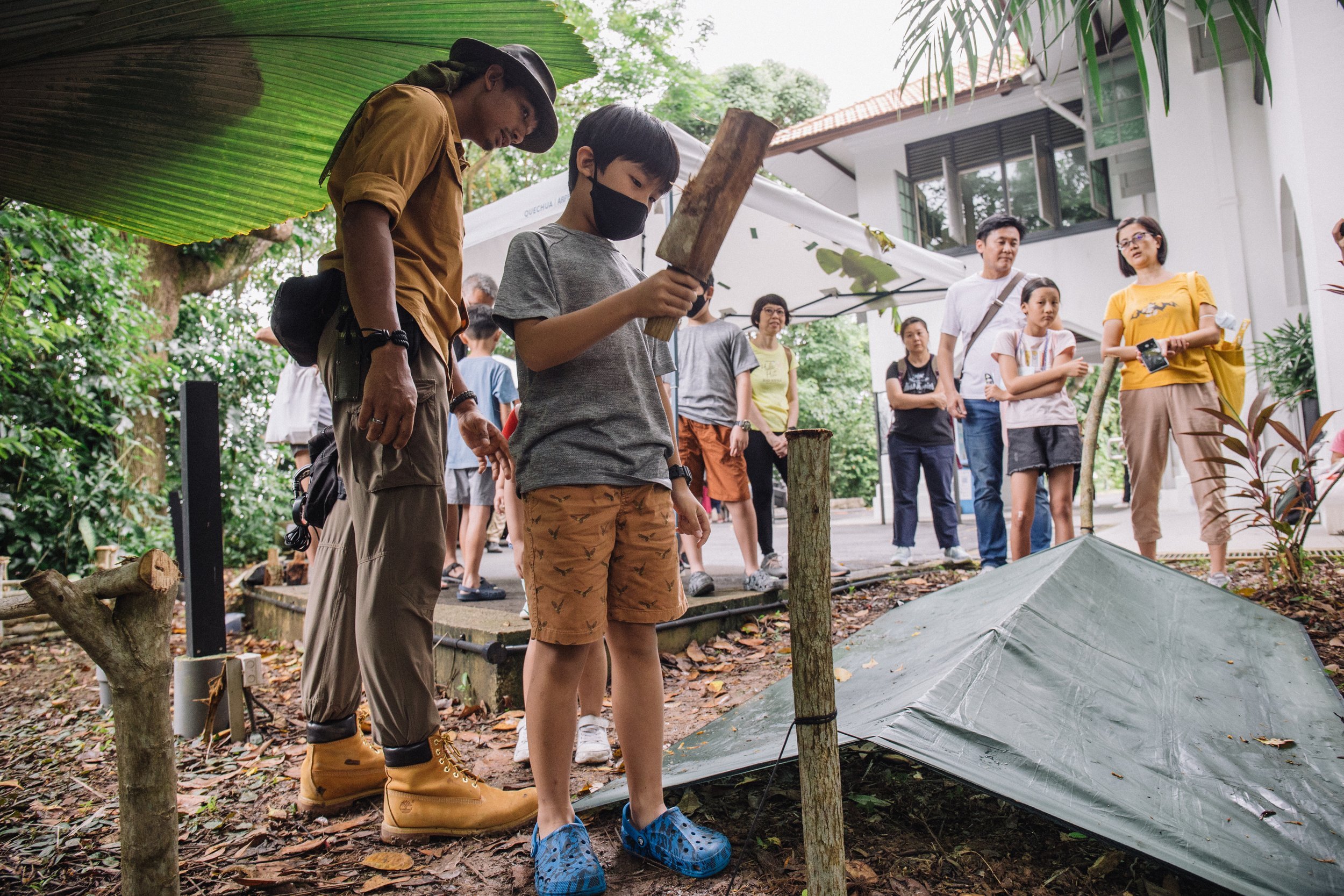
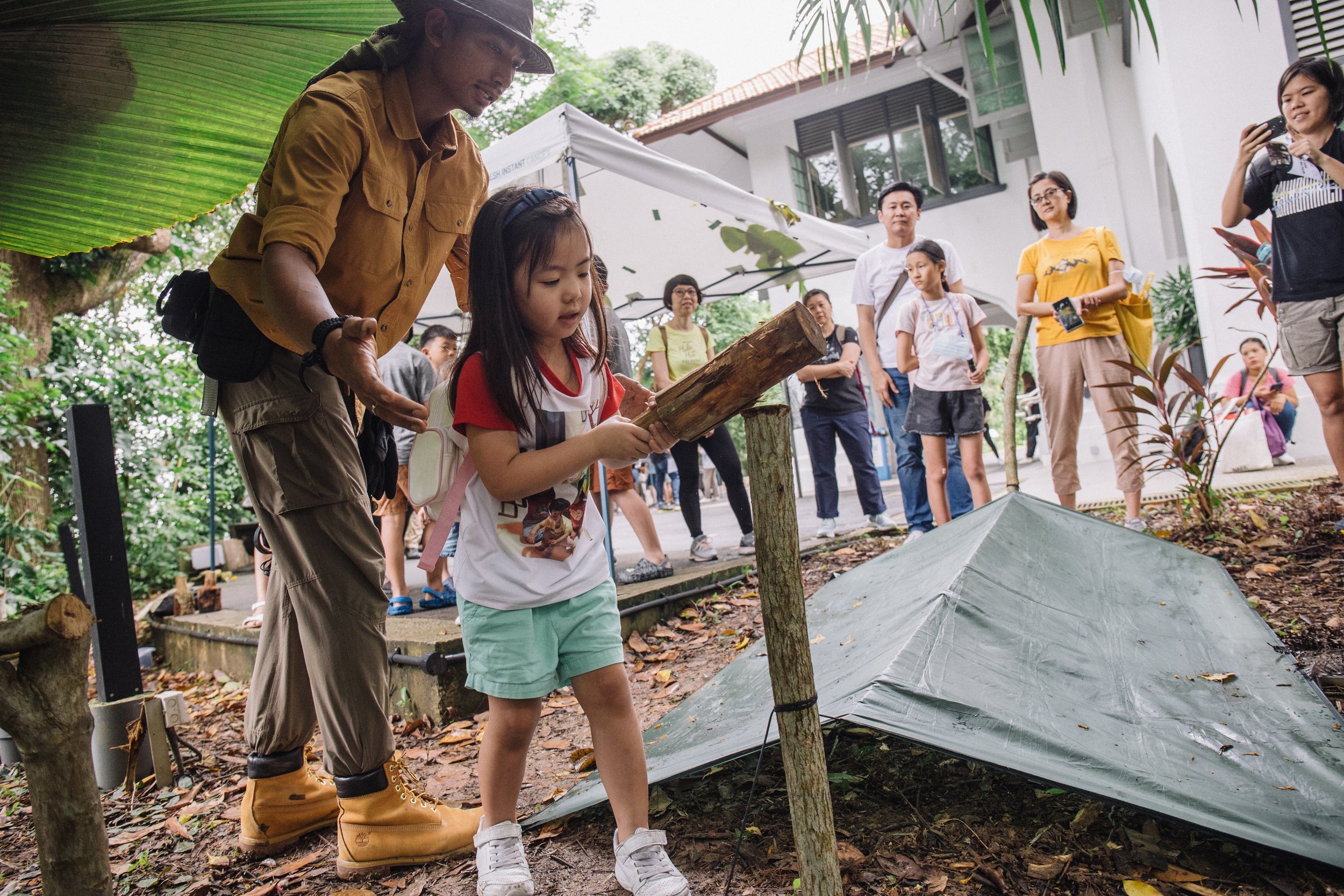

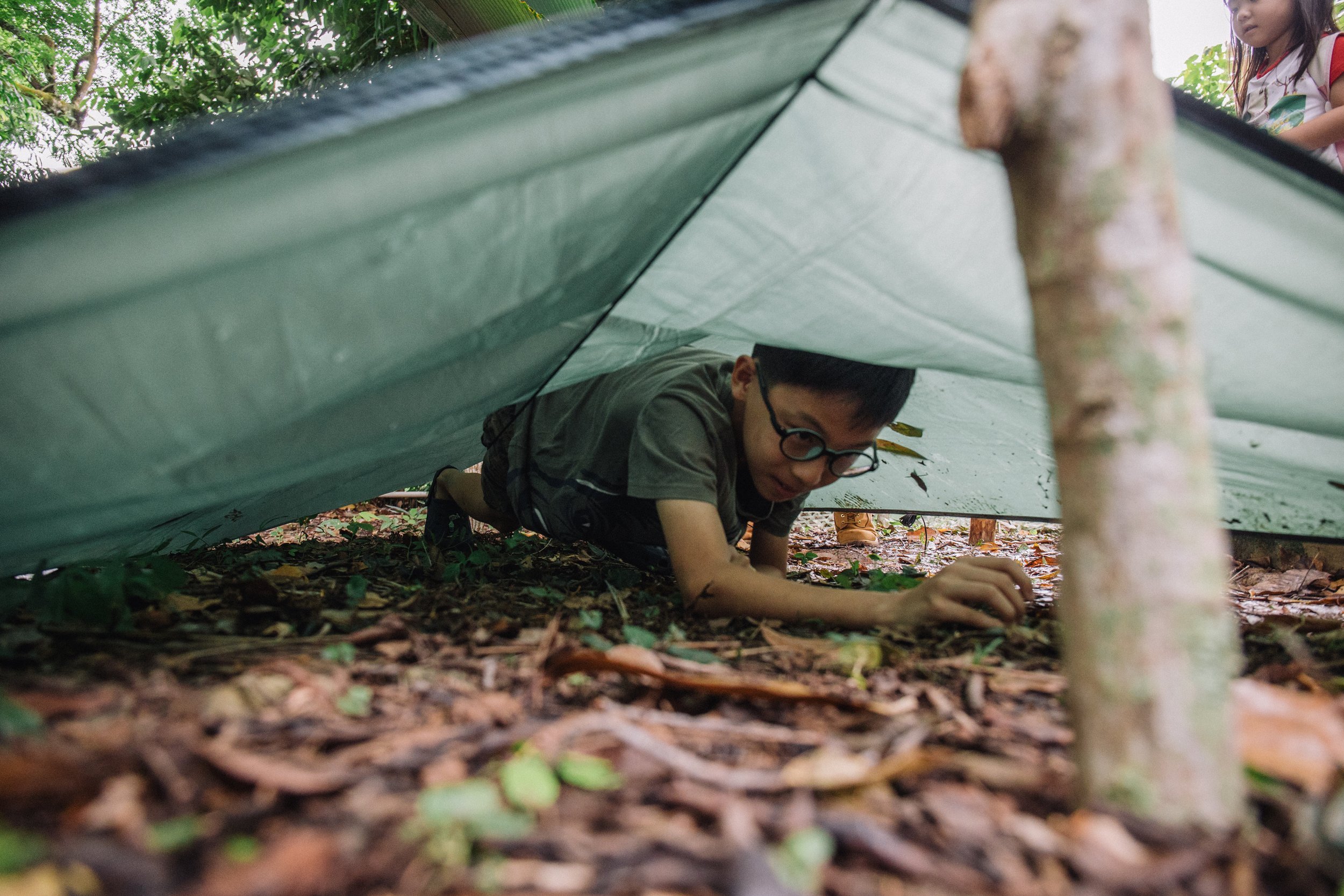
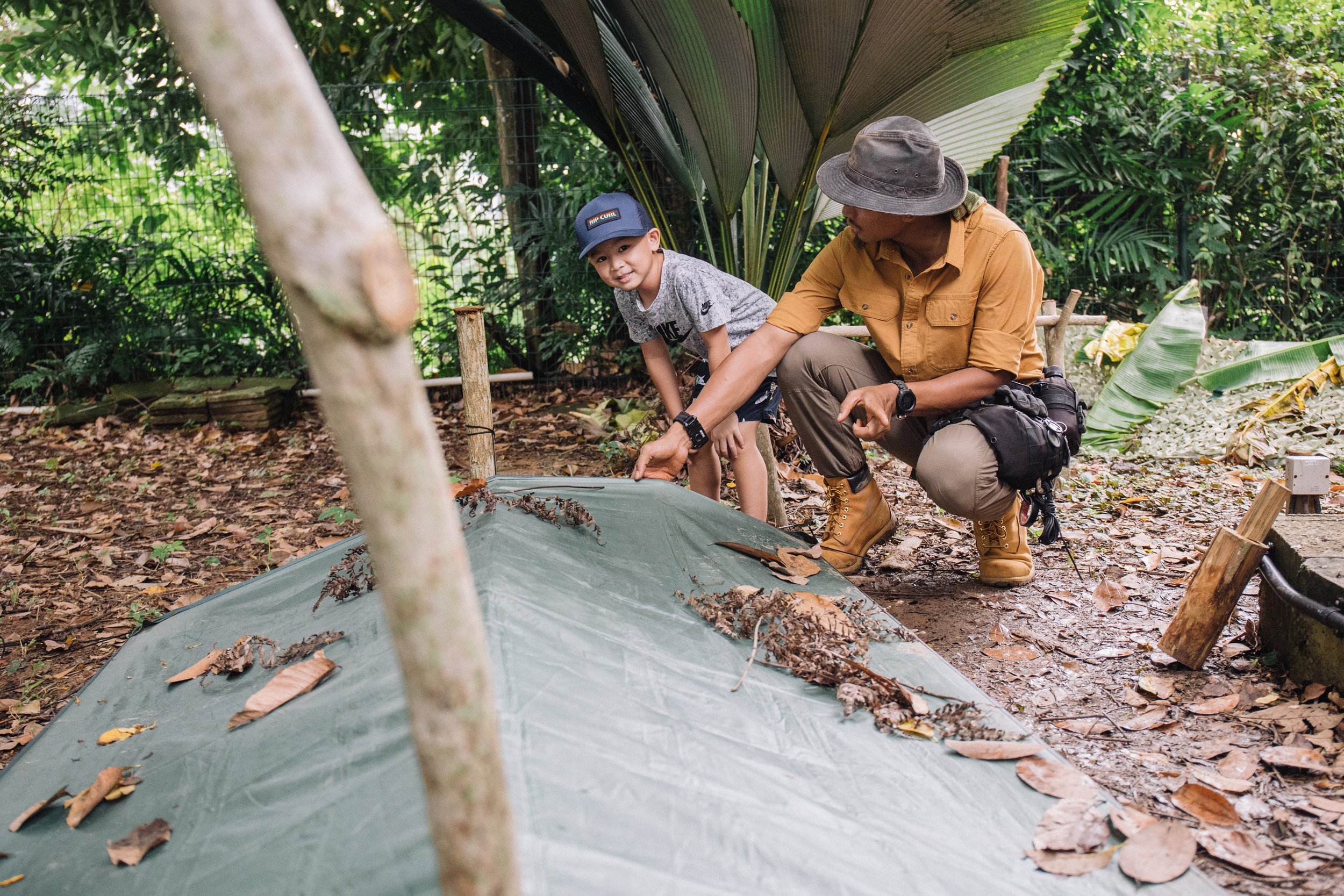
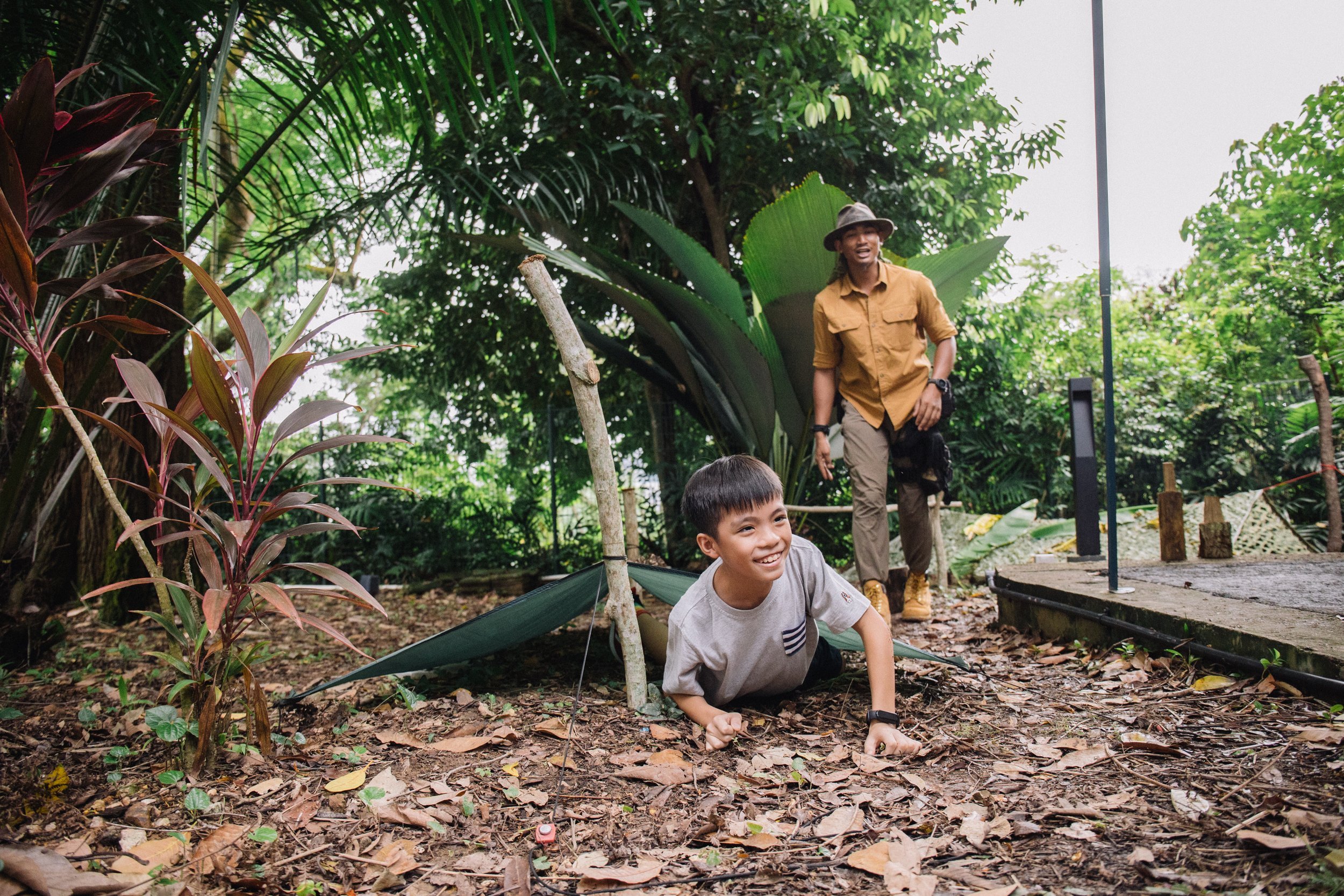
Just before we headed to the next station, Shah reminded us that “(a) good shelter makes all the difference when we need a safe space to rest and face harsh elements like the cold and rain”.
Knots & Lashes Station
What your child will learn:
Various kinds of knots and their uses
How to tie three types of knots and lashes step-by-step
A simple rope can be a lifesaver in a survival situation. Knowing how to use a rope and make effective knots will help soldiers in crucial ways, from constructing shelters and creating weapons for hunt.
Knots are vital for survival as well. Square knots or reef knots aid in securing bandages over a wound, while clove hitches help us tightly secure an item to our tent. Bowline knots are useful when we need to hoist, haul, or fasten one rope to another; it’s especially useful for anchoring tarps when building a shelter.
To demonstrate the different ways of tying knots and lashes to children and adults, our instructor, Afiq, was constantly kneeling on the ground as his voice guided us through each step. We were taught how to tie a bowline knot via an adorable “rabbit story” to help our young minds and parents remember the steps.
"Now, let go of your thumb."
"Good! Then, place your index finger here…"
"Pull!"
"Find the rabbit, make it go underneath and behind the tree..."
"Make a number six…"
"Pinch!"
Fire Lighting Station
What your child will learn:
How to start a fire when out in the wild with only natural resources.
How to sustain the fire long enough to cook a meal
When Lieutenant Adnan and his men were out in the wild, they did not have matchsticks or a lighter. But they needed to get a fire going; a fire could keep their soldiers warm, boil water, cook food to fuel their strength, and even keep wild animals away.
That’s where a ferrocerium rod comes in handy, alongside natural tinder sources that can ignite a fire, such as dry bark, twigs, and leaves.
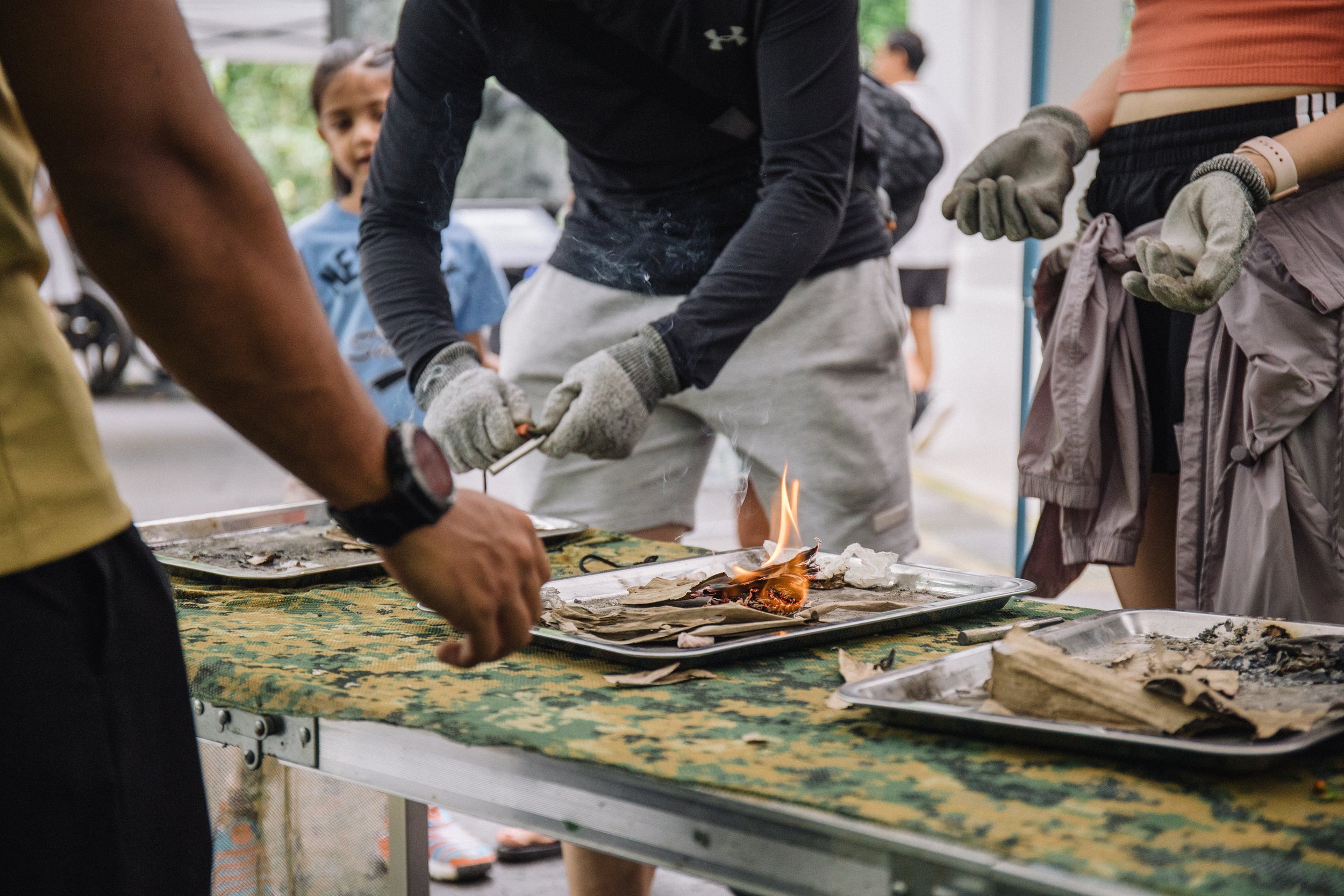

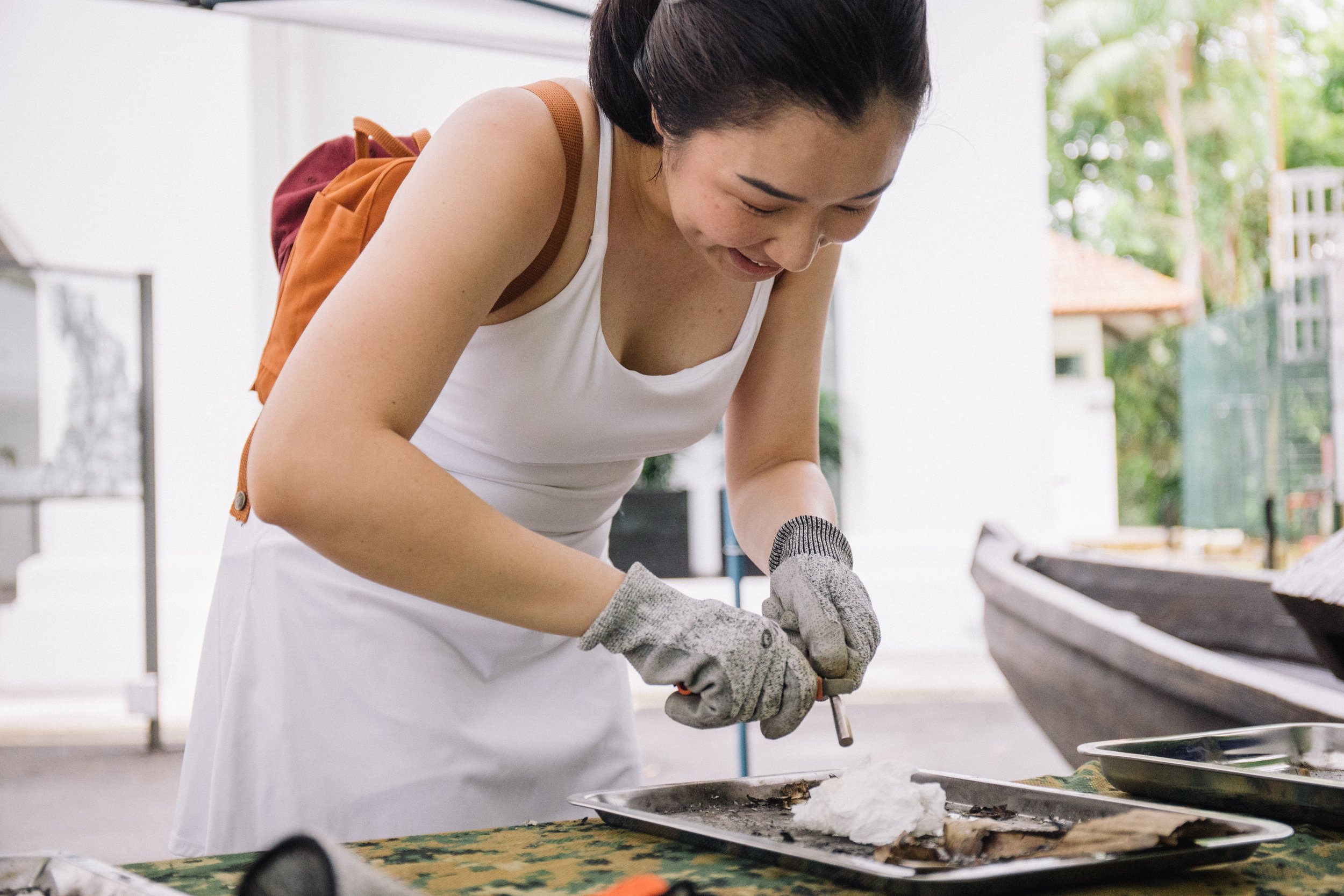
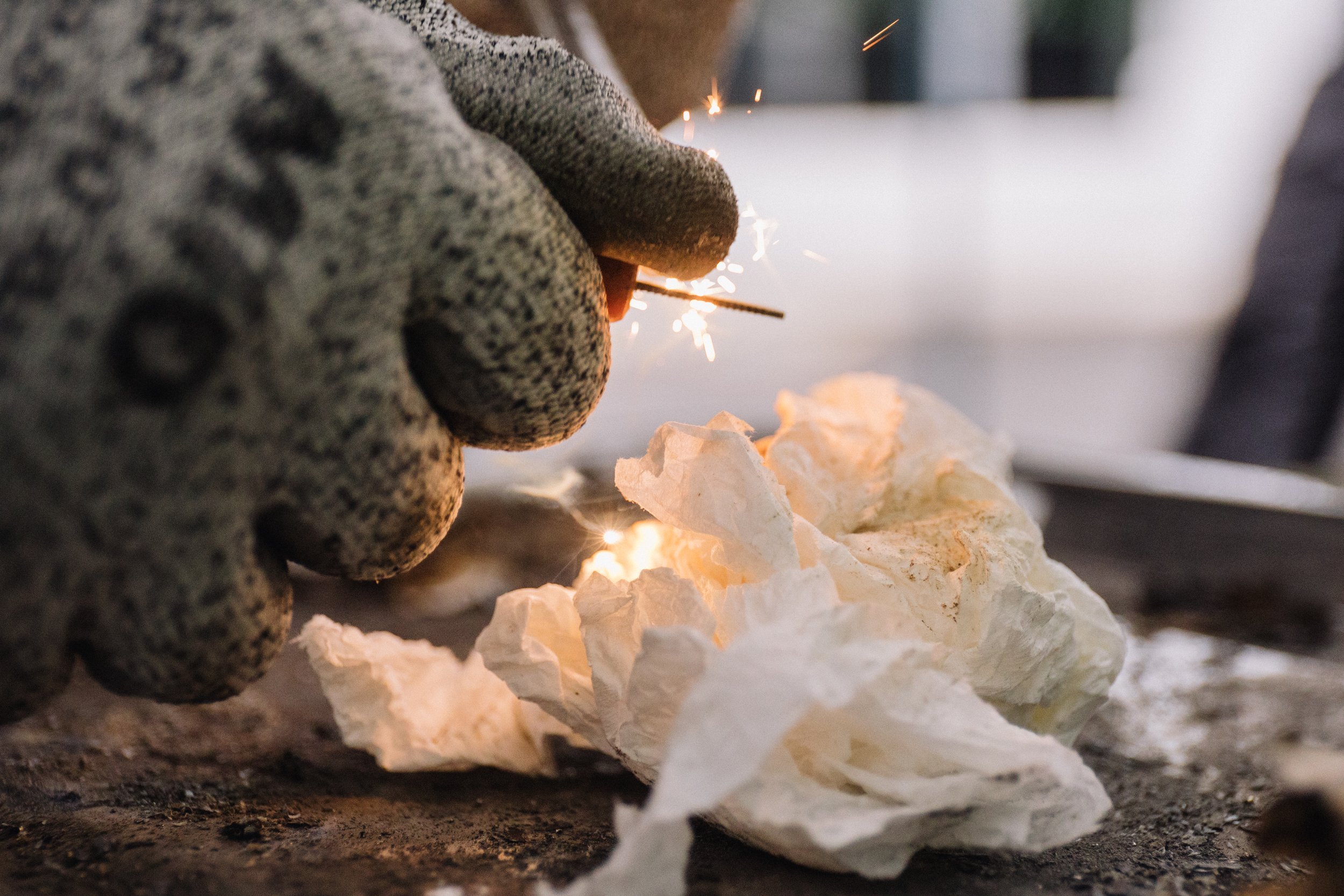
Also, starting a fire is not enough – preparing enough wood to fuel it so it can last through the night is an equally important skill! With safe equipment, participants each got a turn to try lighting a fire and having a feel of the materials that would be useful to make a long-lasting fire.
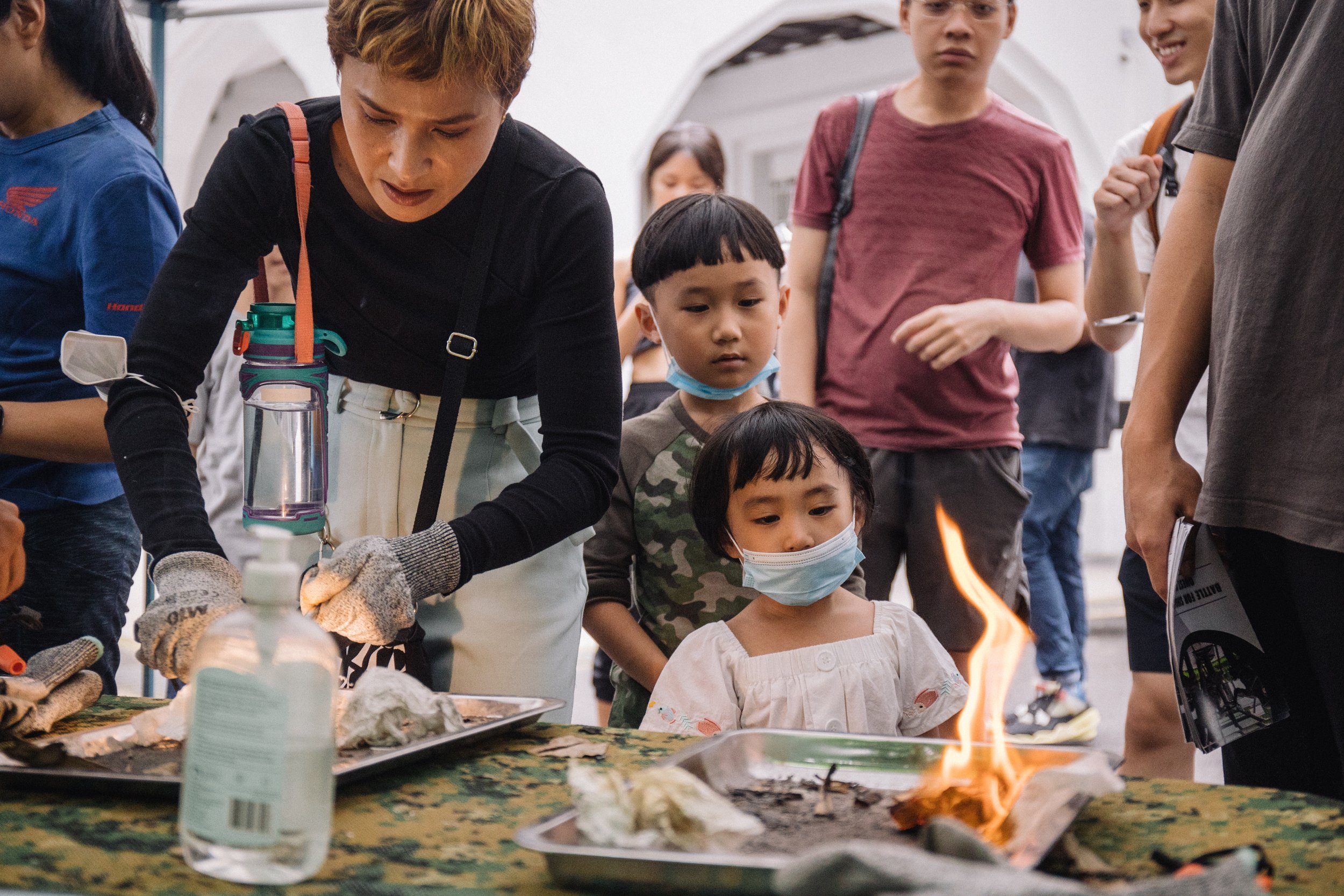
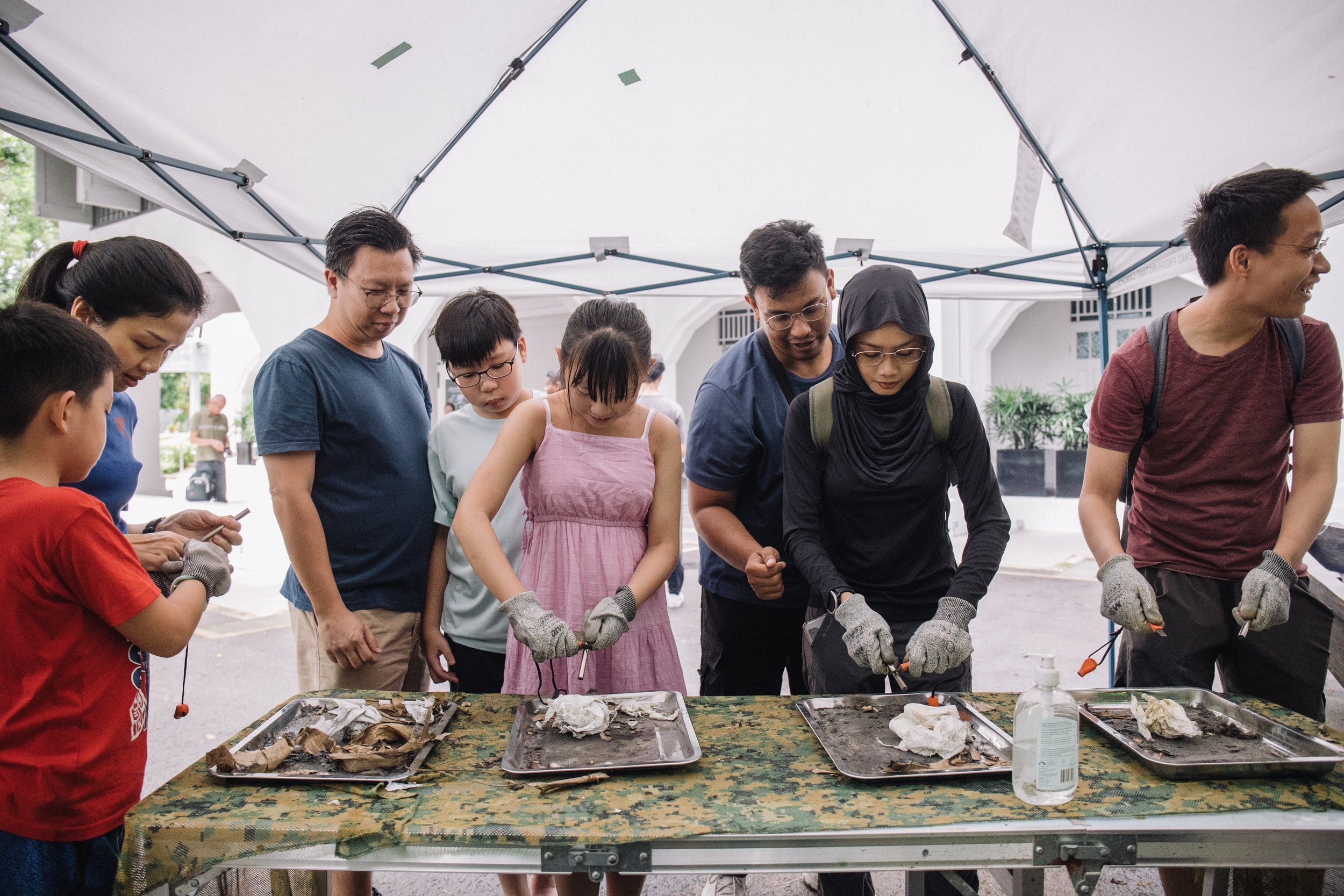
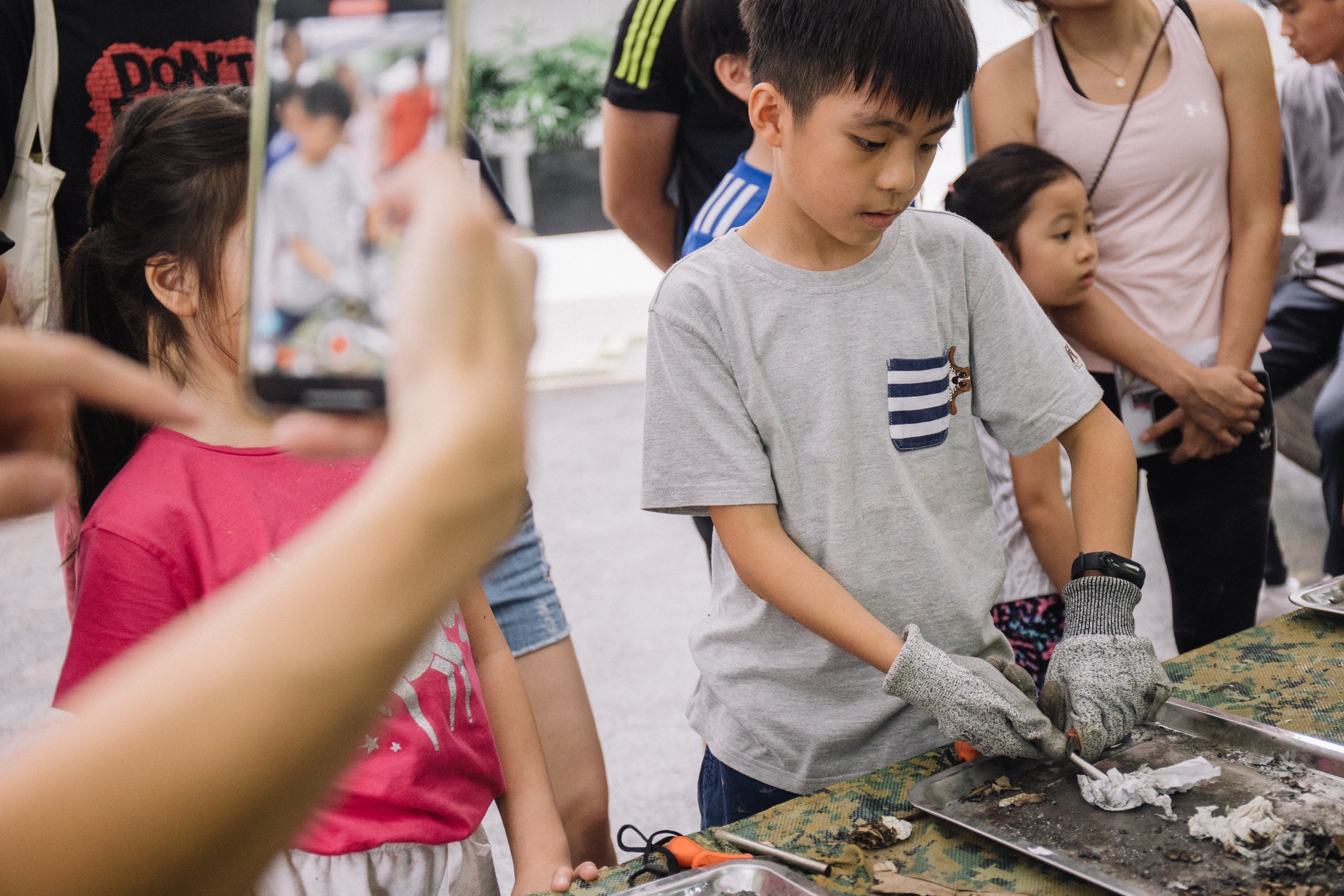
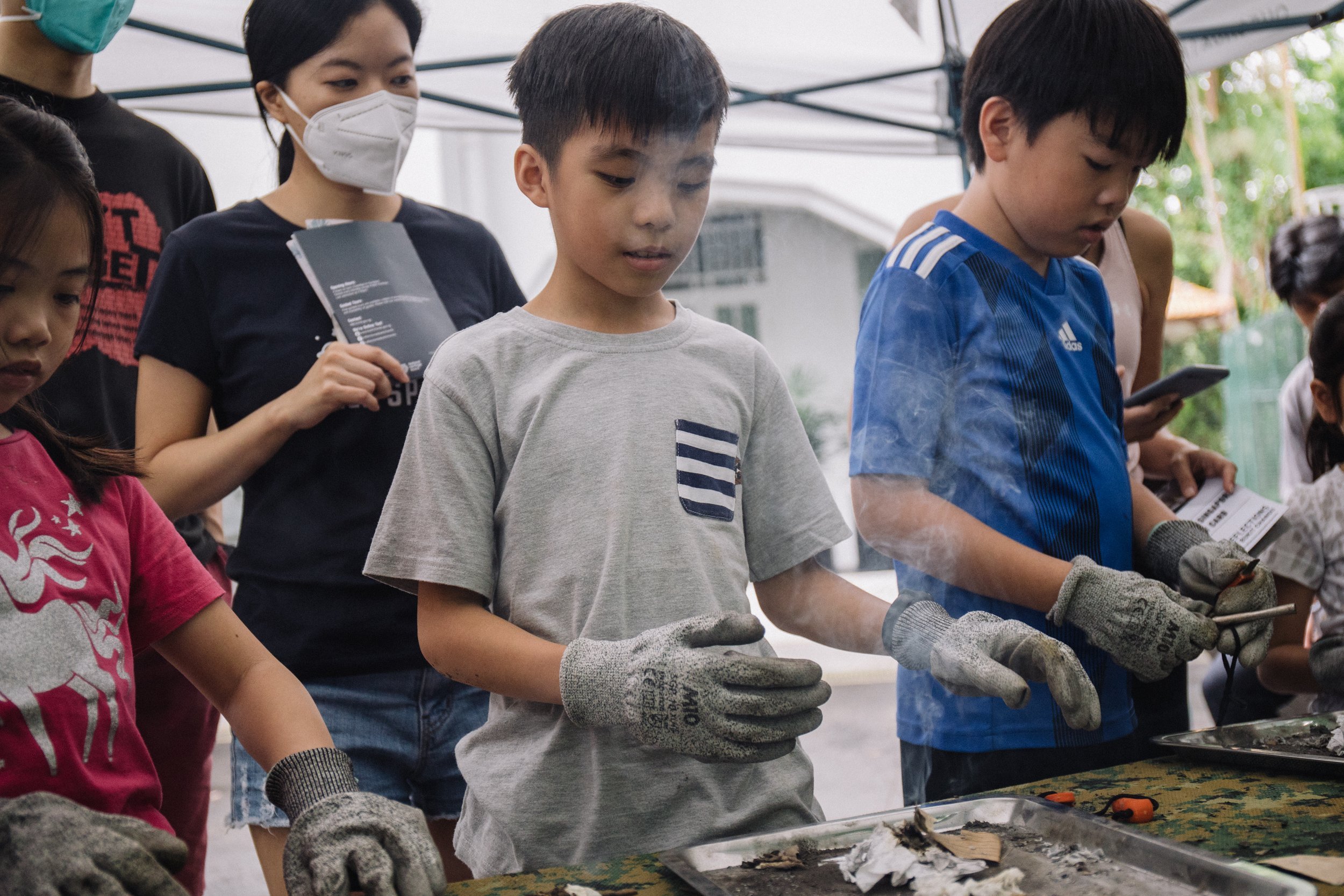
My experience at this station was impressionable; several parents enthusiastically stepped forward for an attempt, and this one man kept going and trying even when our group had left. When the tissue in his tray burst into flames, he whipped off his gloves in victory, and everyone around him cheered and clapped with joy.
With these six activities, you and your child get to sharpen your survival skills and more importantly, your child gets to learn about what they’re likely never able to learn in school. This will be an unconventionally unforgettable experience for your family, so do make plans for this to be on your family’s schedule whenever Beyond Expeditions hosts something similar in the future!
If you are intrigued by what you’ve read here and was unfortunately unable to make it for this event, Beyond Expeditions does have several other experiences for you that go beyond what’s conventionally offered in Singapore. Check them out here!
Article written by: Valerie
Valerie, a freelance writer with a quirky infatuation with steamed buns and slightly bizarre food combinations.
(“Try soft-boiled eggs and hot milo!”)
She wishes to keep writing stories that bypass typical food reviews and appreciation of scenery, stories that inspire readers to pursue curious conversations about the unique cultures and lifestyles of every country.

